After we had finished with the refreshments at the restaurant of the Kirindy Forest Reserve, my friend Sneža and I also had a rather modest lunch that we had agreed right after our arrival in the reserve. Namely, this was not a type of restaurant you come to unannounced and then you get a proper menu with a whole list of possible dishes. Oh, no. Here we had an option to choose between friend potatoes with ketchup or spaghetti with ketchup. But, when you are hungry, you are ready to make some compromises. In any case, we ordered some more of the cool, soft drinks since we felt dehydrated. And yet, despite all of this, I still felt the need to walk some more in the surroundings.
Thus I came across something which I believe had been placed there for the benefit of visitors, but it did not diminish my interest in any way. Namely, the western parts of Madagascar are dominated by the Sakalava tribe and they are known for placing on the tombs of their deceased wood sculptures that explicitly show some very sexy scenes. As I’ve read, it is simply a matter of tradition and in the past this could be seen regularly, but then some “smart” tourists started to take away, i.e., to steal those sculptures, so the Sakalavas began to hide their graves skilfully in order to be able to continue with their tradition in peace. Well, a place like this exists some 20 metres away from the restaurant, so I presume that this is a structure placed there for the visitors rather than that the Sakalavas had a grave of theirs right there where the research and tourist facilities have been built.
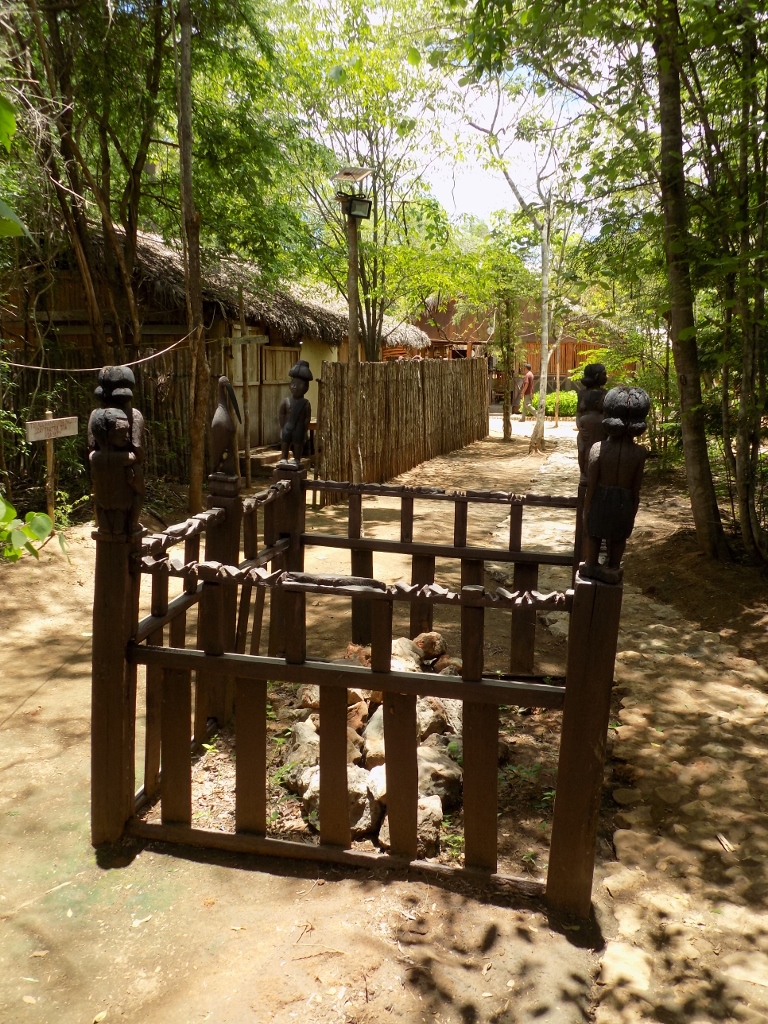 A tomb within the reserve
A tomb within the reserve
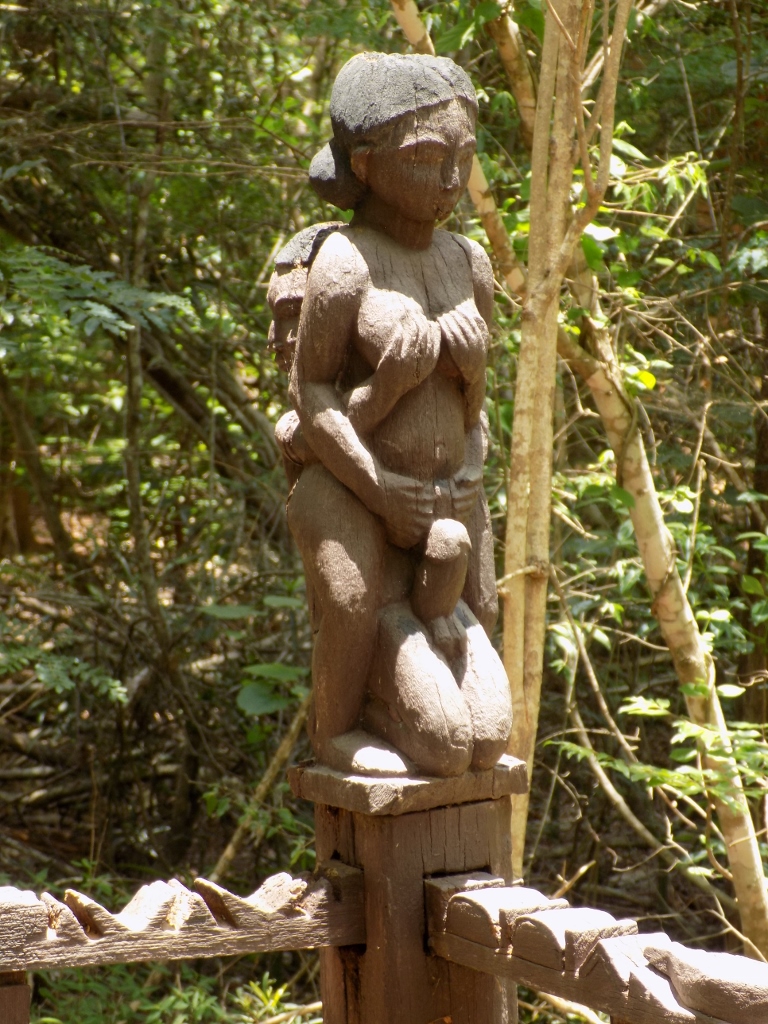 A detail from the fence around the tomb
A detail from the fence around the tomb
I also dared go into the forest alone a little and I was very content and proud that on the basis of not too strong sounds I could presume where the lemurs were, so I noticed them and then I spent some more time watching them, while being watched myself.
 Red-fronted lemur
Red-fronted lemur
We had to wait for a little while until our drivers had also finished their lunch and then we all headed back. The plan was to make a few other important stops along the way. The first one was by a holy baobab which is said to be over one thousand years old. I don’t know if that is what makes it sacred, but it is certainly situated in a specially fenced off parcel of land within a village through which the road passes. This plot must not be entered with shoes on, so Sneža and I took ours off, as is proper in this place.
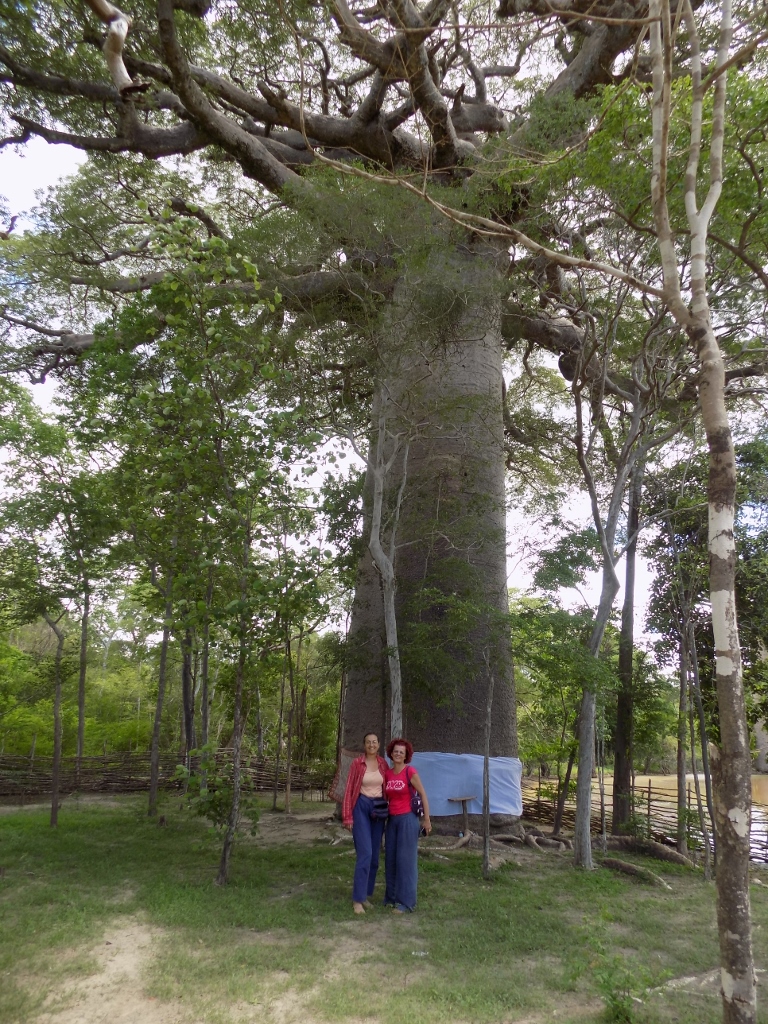 Two traveller-friends by the holy baobab
Two traveller-friends by the holy baobab
Of course, in the photo above it is not possible to see the proper scale and the size of this tree, so here is another one which is slightly blurred, but is at least indicative.
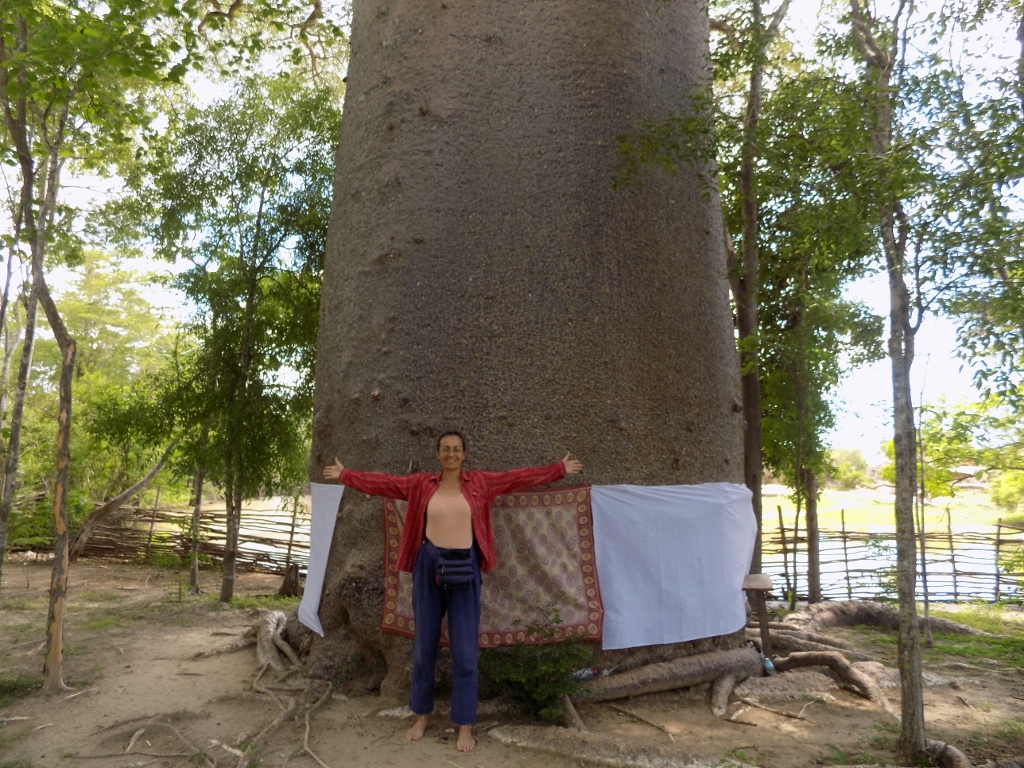 By the holy baobab
By the holy baobab
There are other baobabs in the village and there is also a local pond in which zebus may cool down and where they can also drink some water.
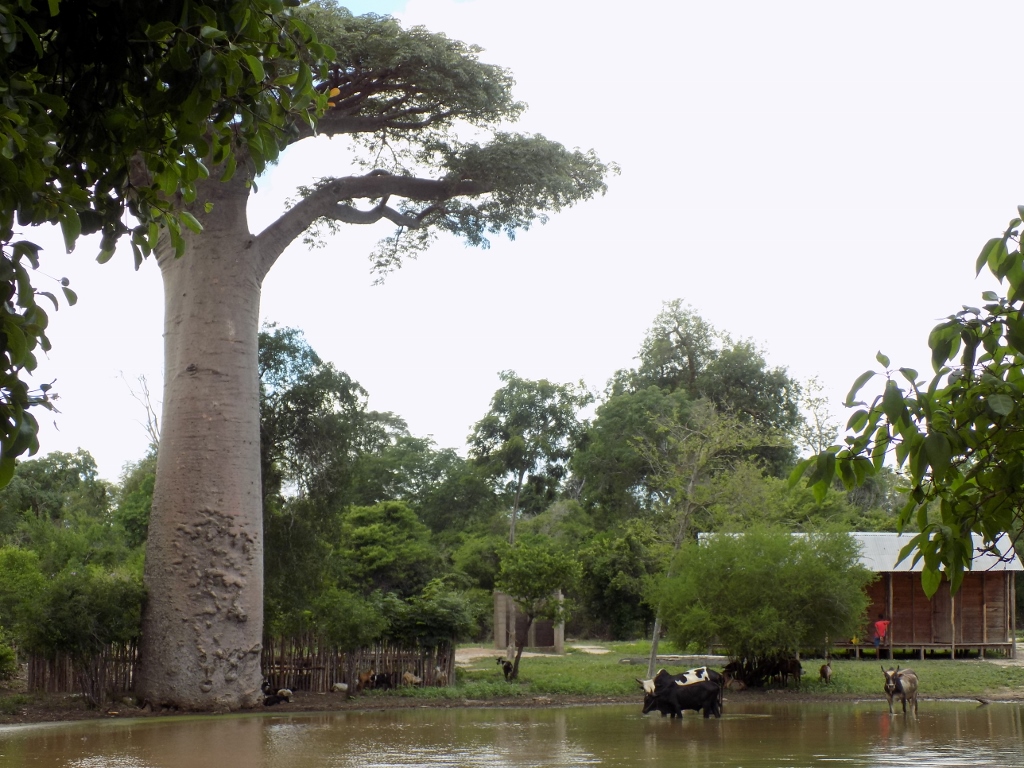 Local waterhole
Local waterhole
On the other side of the road from the parcel with the holy baobab there was yet another impressive specimen of this truly incredible tree.
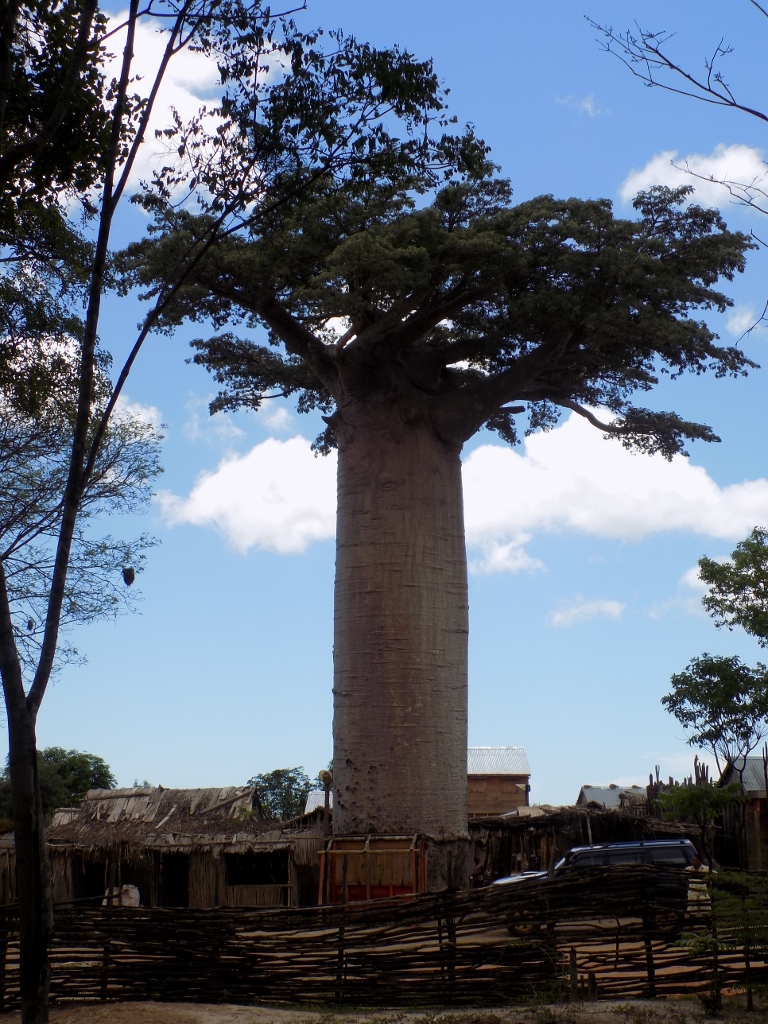 There are baobabs all over the place here
There are baobabs all over the place here
We were leaving the plot with the holy baobab just in time to see a form of local transportation which I originally planned to use when travelling around the country. This type of public transportation is called taxi-brousse in Madagascar. These are vans where passengers go in, while the luggage goes up on the roof. The main shortcoming is the slowness in comparison to the car we were in, although we certainly also had more comfort than what the one in the picture below provided, plus on this hot and humid day we had air-conditioning as well. In some parts of Madagascar trucks are used instead of vans and then this type of transportation is called kamion-brousse. This is usually the case in the parts of the country where there is a lot of rain and a lot of floods, while the roads are made of earth and are full of deep potholes that turn into pools and then vans and ordinary vehicles cannot pass. I wondered how this van managed to go along the road north of Morondava bearing in mind that I had been told that this road was impassable during the rainy season unless travelling by a 4x4 or a truck. However, this taxi-brousse obviously travelled quite well here and even picked up some new passengers in this village.
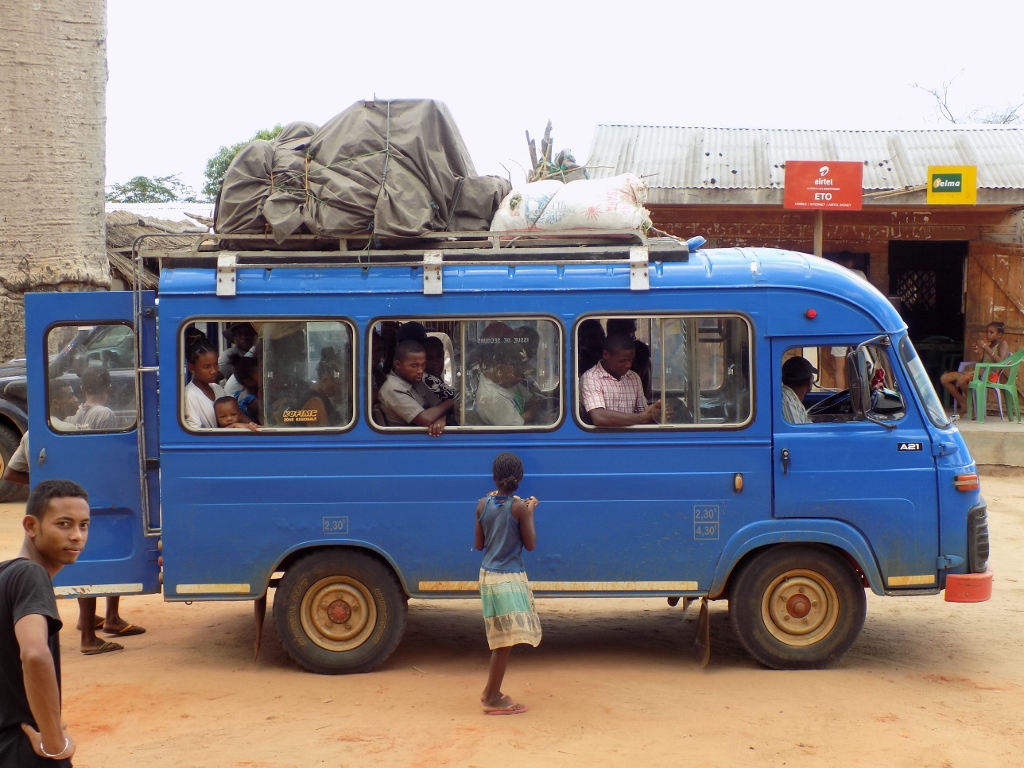 Taxi-brousse
Taxi-brousse
After this we went to the perhaps most famous baobabs here and these are the Baobabs in Love (Baobab Amoureux). These are in fact two baobabs that belong to yet another endemic species, Adansonia Za, which over time started to twist one around the other. There is also a legend linked to them about two young people who loved each other very much, so the gods allowed them to live their love for eternity through these two trees.
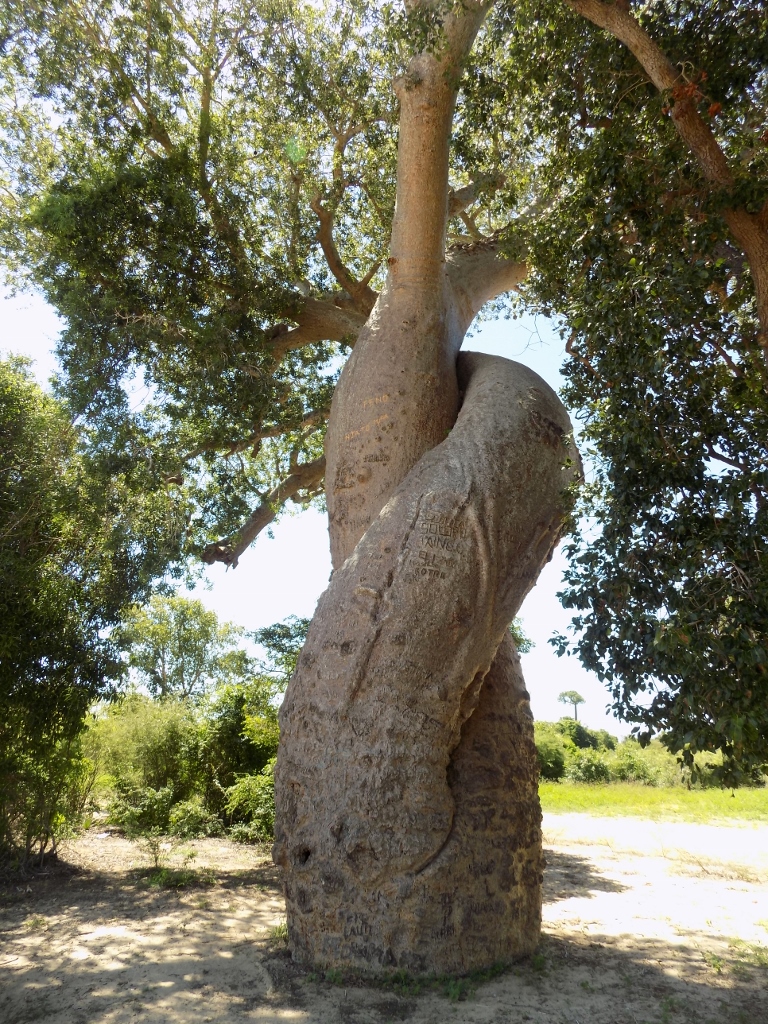 Baobabs in Love
Baobabs in Love
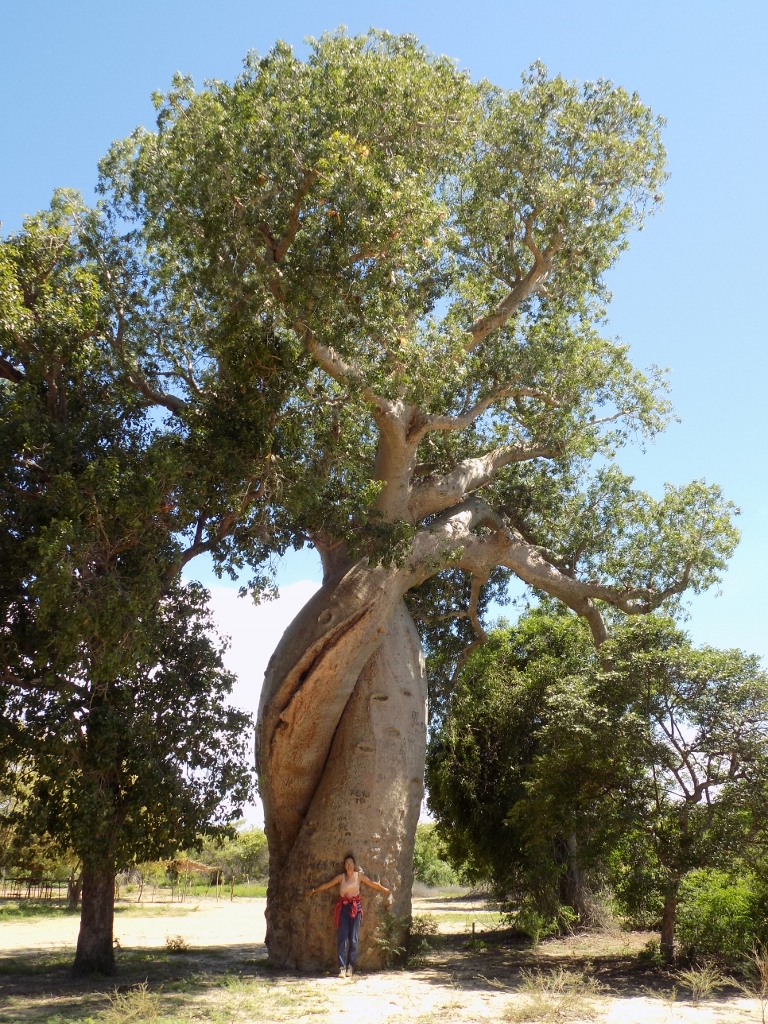 These baobabs are also big
These baobabs are also big
Although apart from the two of us there were no other visitors here (we did see a few foreign visitors back at the Kirindy Forest), in the vicinity there were wooden stalls with numerous souvenirs on sale, while the vendors tried to attract us in order for us to buy something. Still, what I found most interesting was a woman who was selling souvenirs there and who had masonjoany face mask on. Almost all over Madagascar we kept seeing women who went on about their business in the middle of the day and in the street while wearing such face mask. This is some kind of paste obtained from a tree which is believed to protect the skin against the Sun making it softer.
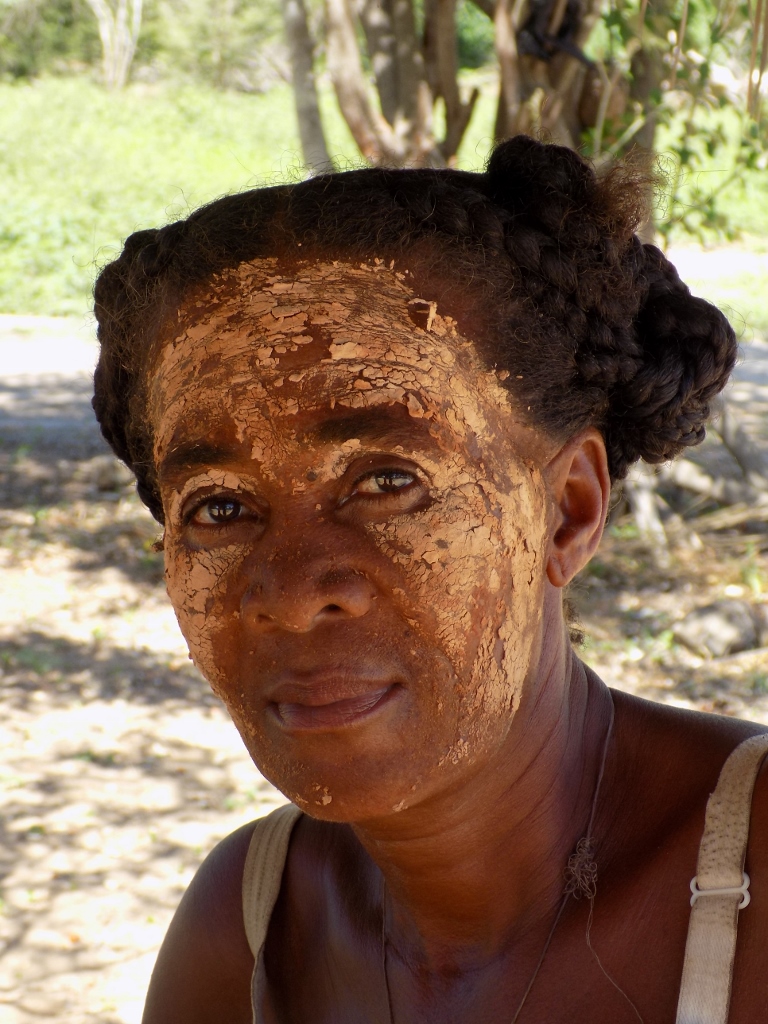 Woman with masonjoany on her face
Woman with masonjoany on her face
Along the way, I continued to take photos of the surroundings with more baobabs, but after this break we returned by our car to the main dirt road that led us again through the Alley of the Baobabs.
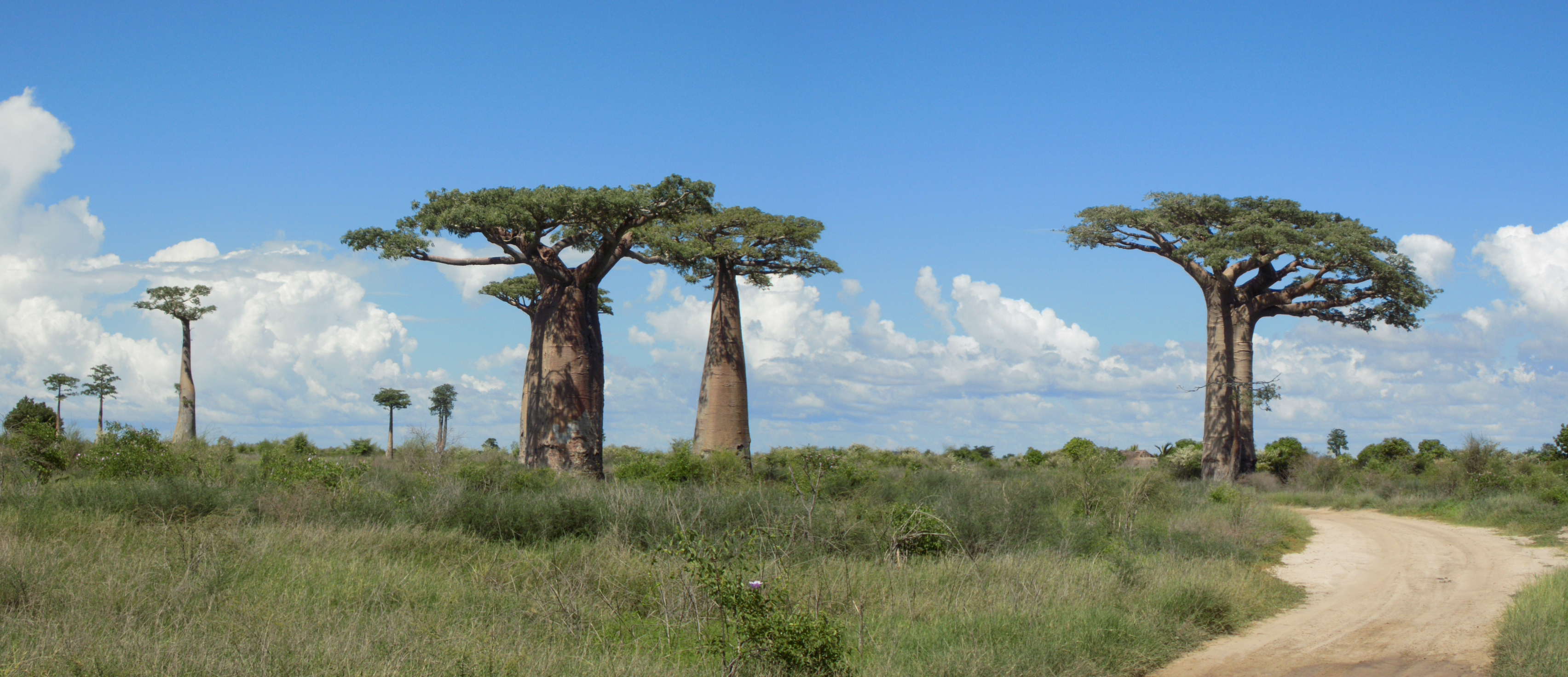
Did the two of us have enough of baobabs for the day? Absolutely not! So we agreed again to get out of the car at the beginning of the alley and to go on foot to its end.
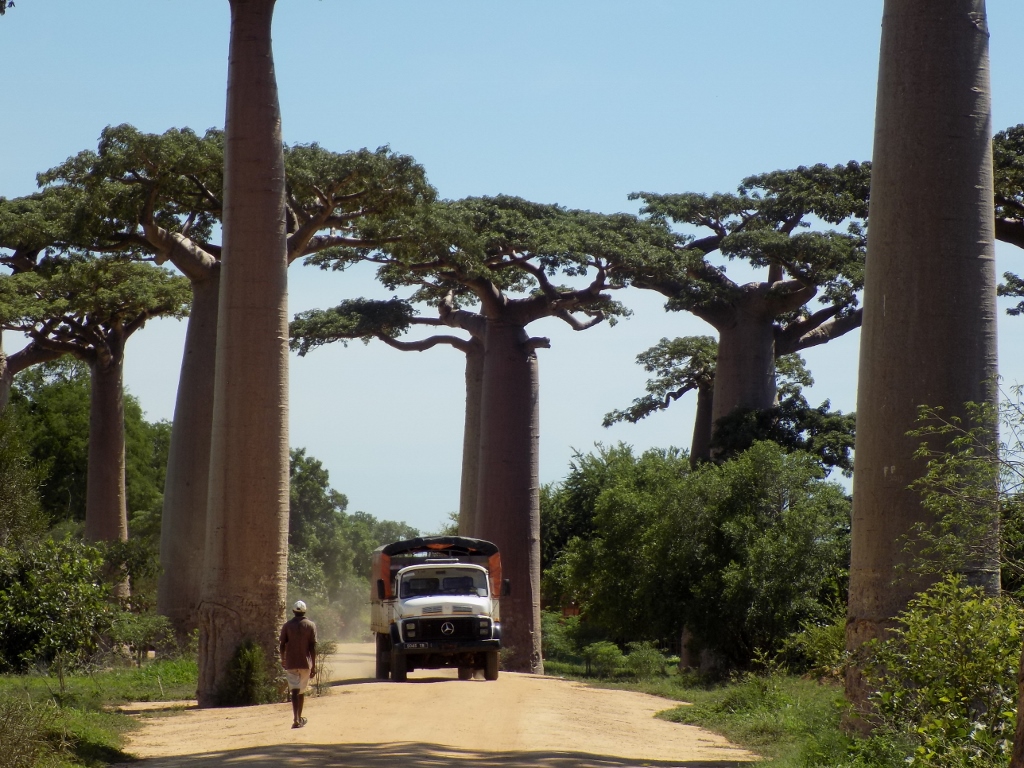 A truck passing through the Alley of the Baobabs
A truck passing through the Alley of the Baobabs
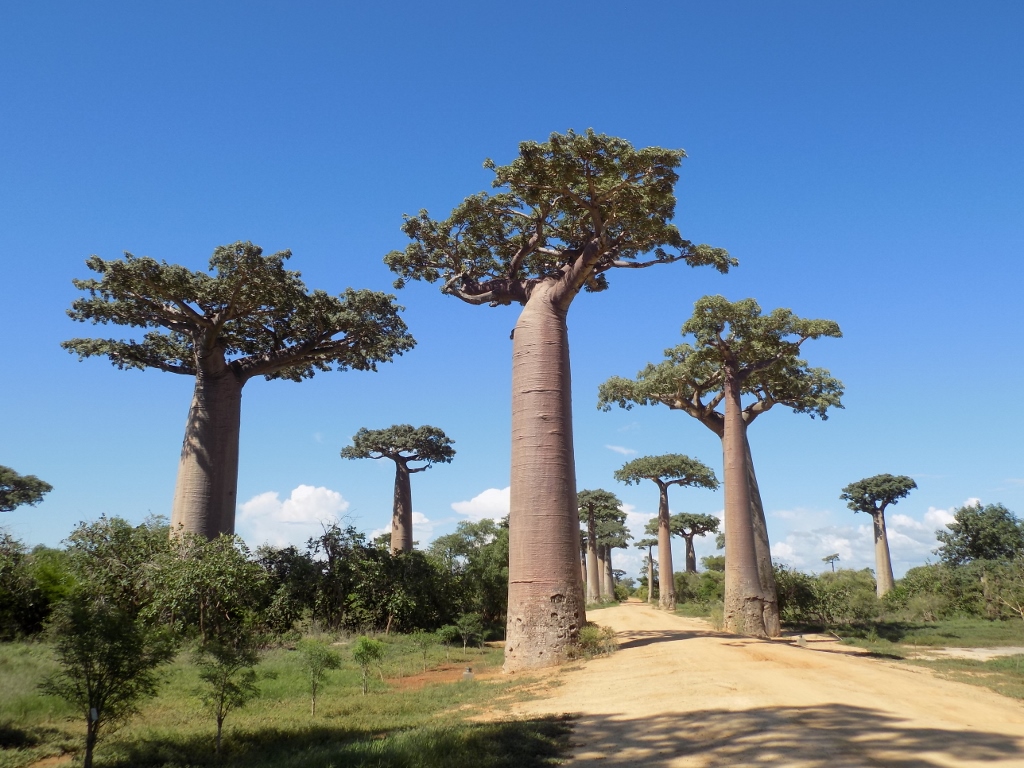 Alley of the Baobabs
Alley of the Baobabs
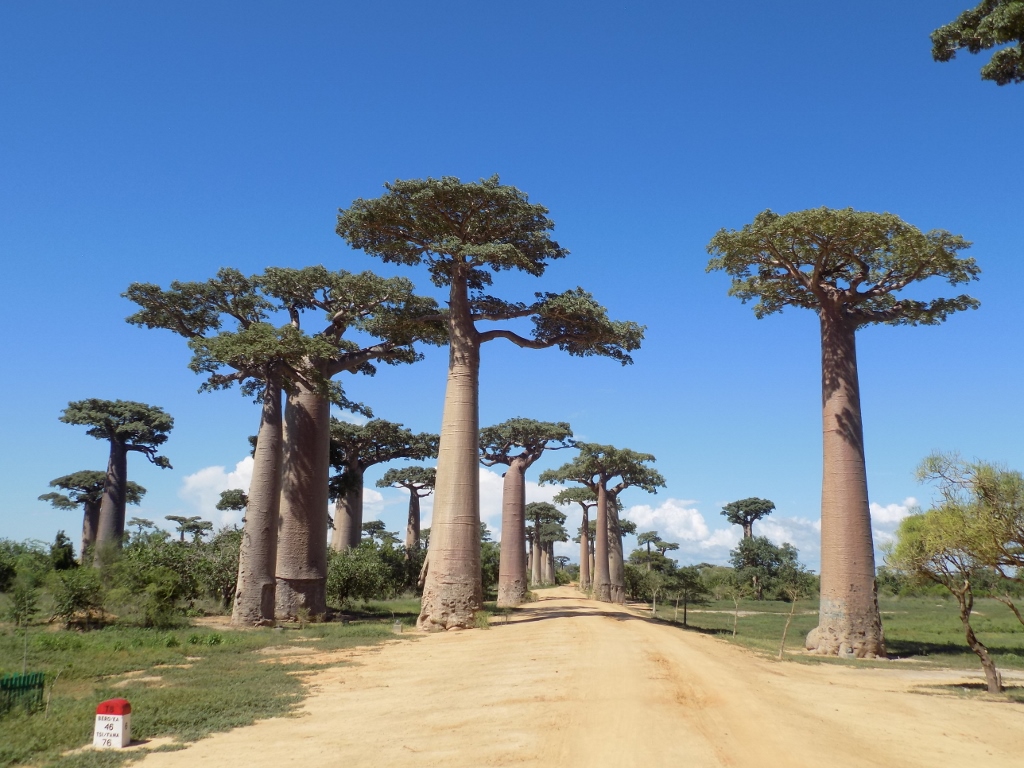 Alley of the Baobabs
Alley of the Baobabs
As it can be seen in the photos, the light was different now than earlier that morning, so I had a perfect “excuse” for more of the incessant photo-taking, but there was still something left which we worried we could miss out on. Namely, it is often emphasised that the Alley of Baobabs is most beautiful at the time of the sunset although there are two things that can spoil this. First, during the rainy season, most often the sky can be cloudy and it may rain, in other words everything is gray. The second thing is that all the visitors know that the alley is “most beautiful” at that time of the day and then everybody wants to come here at that time which creates a lot of crowds. As it can be seen in the photo above, in the middle of the day there was nobody around and the sky was without rainy clouds.
For us, however, the day’s excursion was over, so we all headed back to Morondava. Still, we asked the drivers if it was possible for them to bring us back here again at the time of the sunset, since the blue sky suggested there would be a nice dusk on this day. They checked with their bosses by phone and got the permit. But, since we still had a couple of hours until then, we did return to Morondava and took this opportunity to look for a pharmacy that was open, which was not easy since it was Saturday afternoon, but we still managed to find one in the end.
Namely, already back in Nosy Be Sneža started to get some skin rash which by now was giving her a lot of trouble. As the pharmacist told us, this was an allergic reaction to an insect bite, but it was unclear which insect it was. In any case, the medicinal cream was bought and within a couple of days the problem was completely gone.
After the break in Morondava, we all got together again and went back to the Alley of the Baobabs. And yes, indeed, the light of the Sun was different and it was worth the return.

There were also more people around than in the afternoon, but not significantly more. On the other hand, I think we were the only two foreigners there on this day.
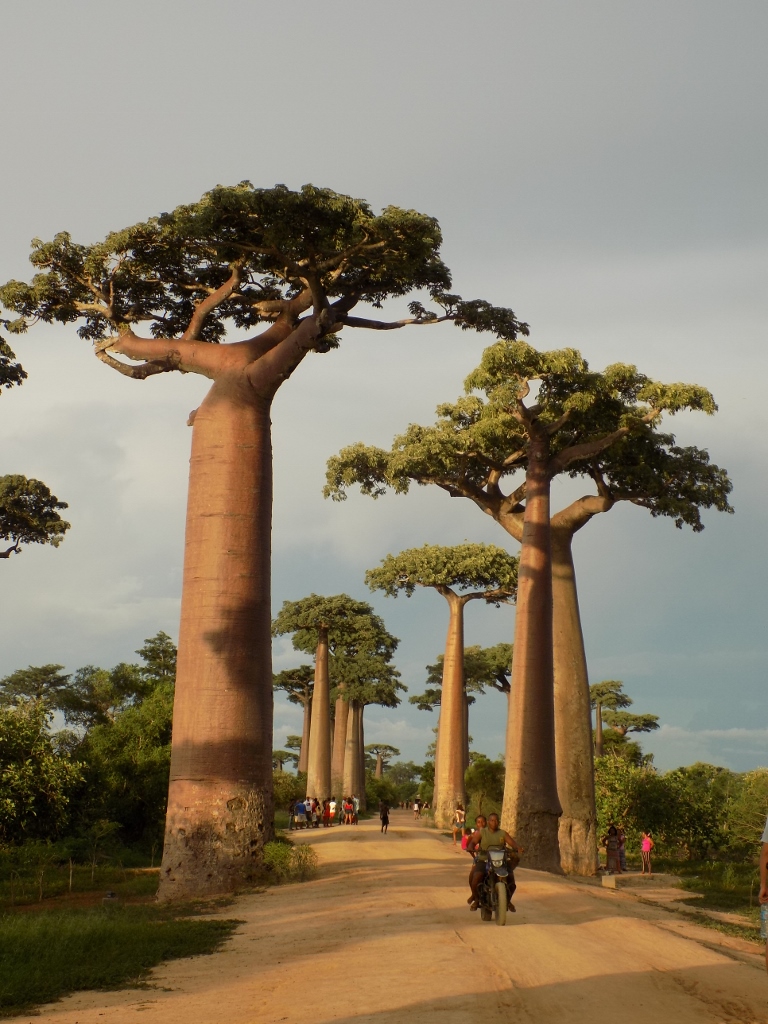 Alley of the Baobabs is a fine place for an early evening stroll
Alley of the Baobabs is a fine place for an early evening stroll
When I look at my photos now, I think I should have walked a little across the field east of the road since I would then see the baobabs along the alley against the setting Sun. However, when I was there, I was so fascinated by the sights that it did not even occur to me that I could get another angle of shooting. I just kept taking photos wanting to take advantage of the light of the Sun which was seriously surrounded by clouds and that light kept changing all the time and rather quickly.
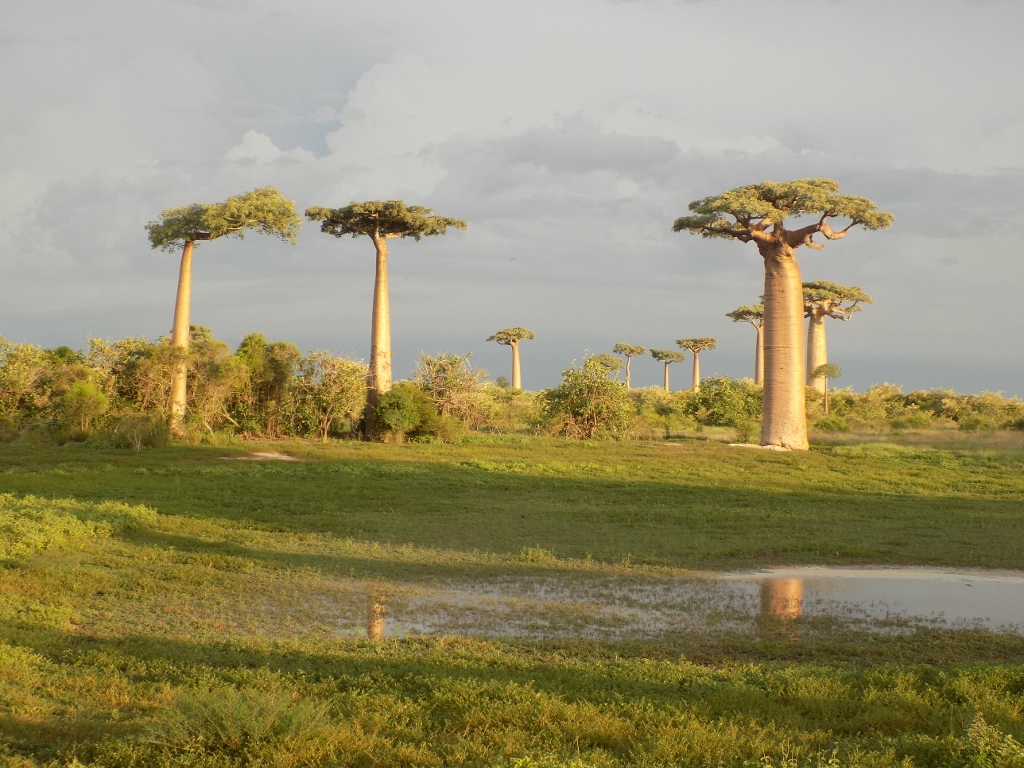 Baobabs close to the Alley of the Baobabs
Baobabs close to the Alley of the Baobabs

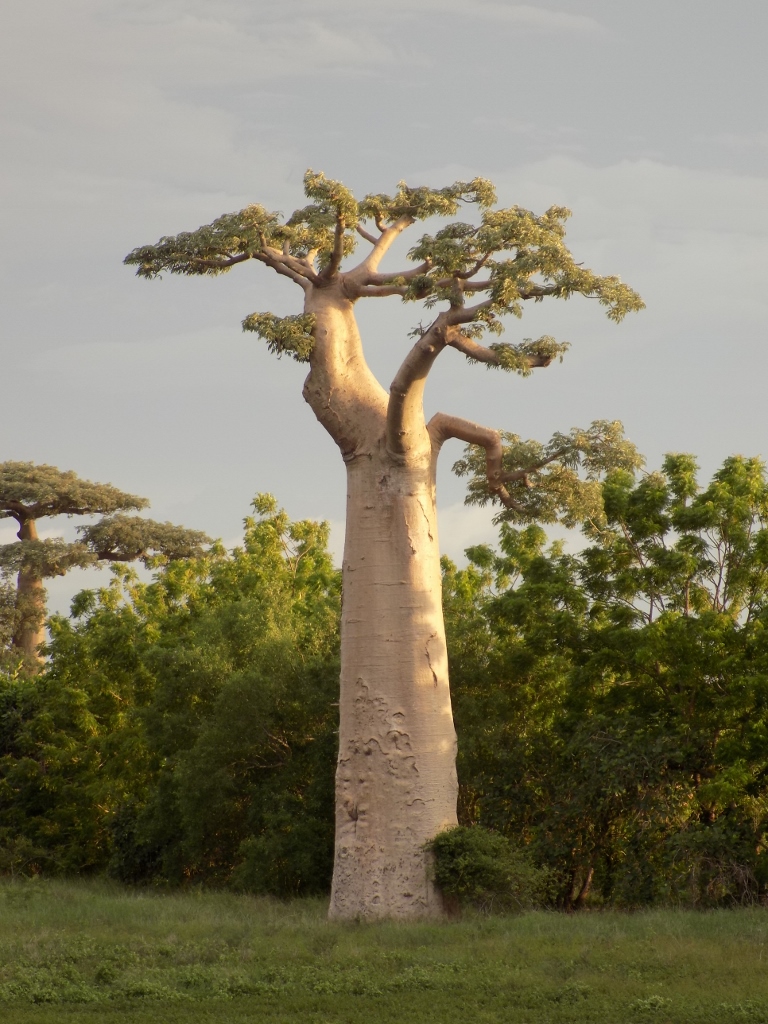 Baobab at sunset
Baobab at sunset
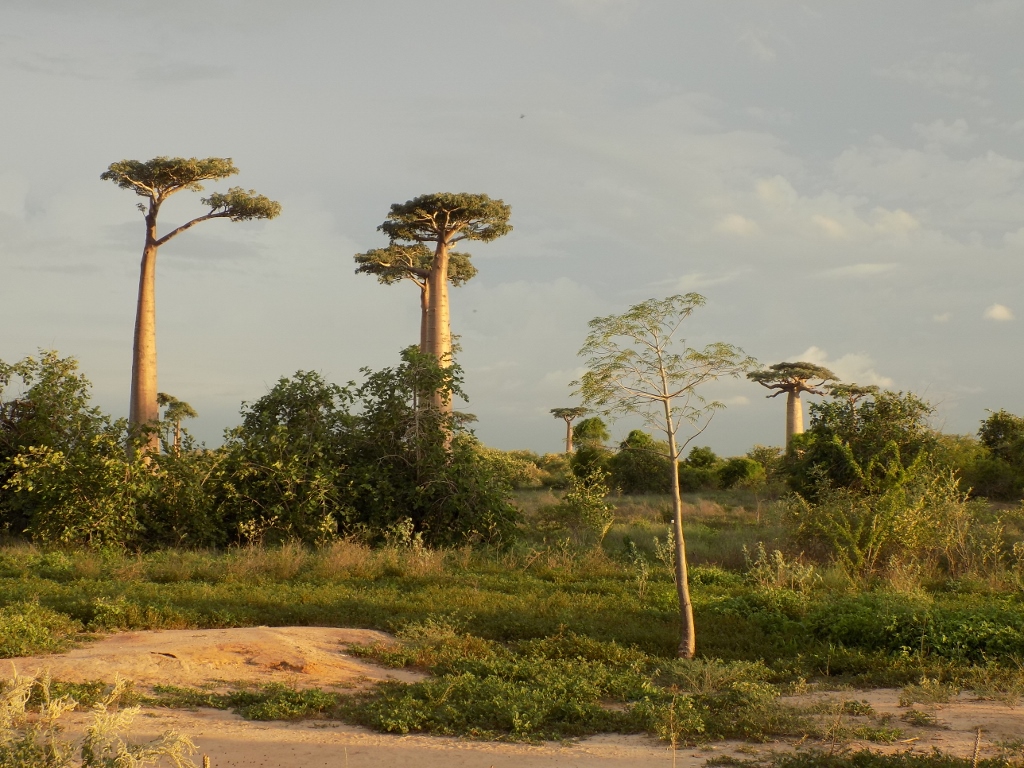 The tree in the front is a young baobab
The tree in the front is a young baobab
On the other hand, even from the road itself I could enjoy the dramatic visual scenes that I was surrounded with.
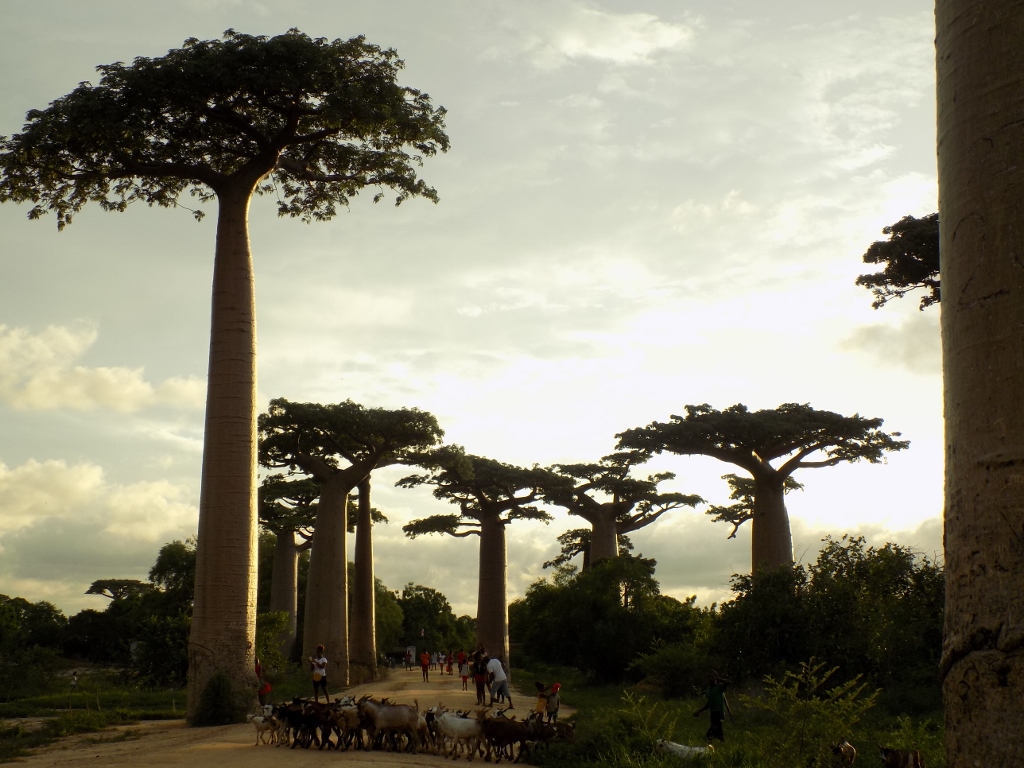 Alley of the Baobabs at sunset
Alley of the Baobabs at sunset
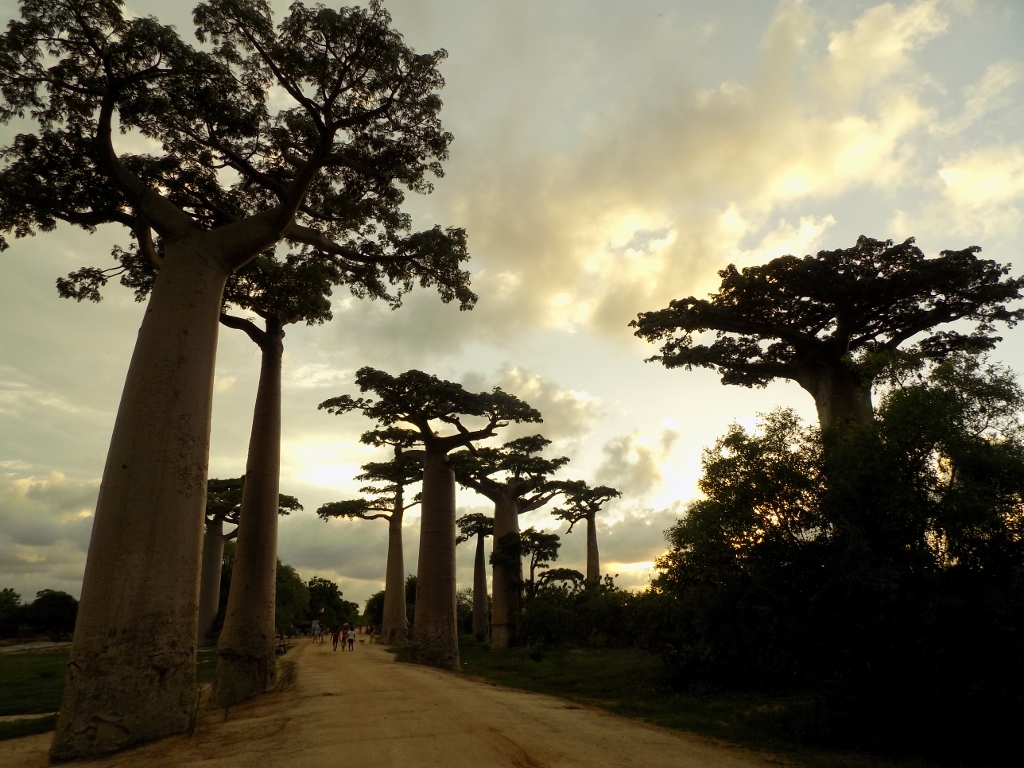 Alley of the Baobabs at sunset
Alley of the Baobabs at sunset
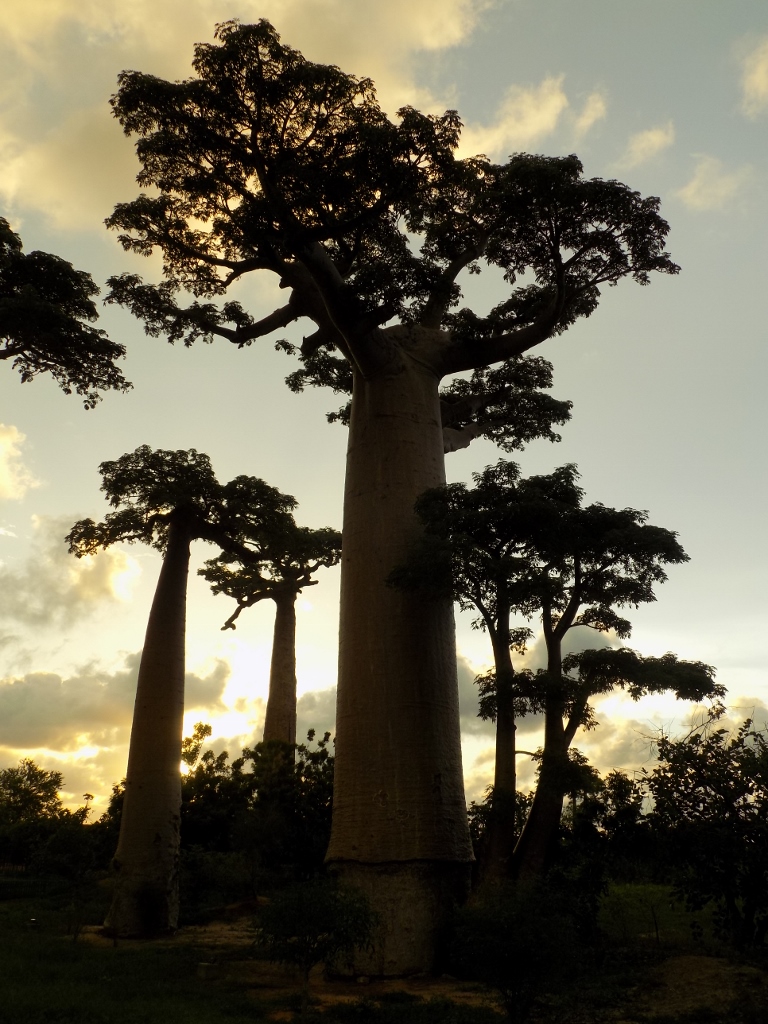 A detail of the Alley of the Baobabs at sunset
A detail of the Alley of the Baobabs at sunset
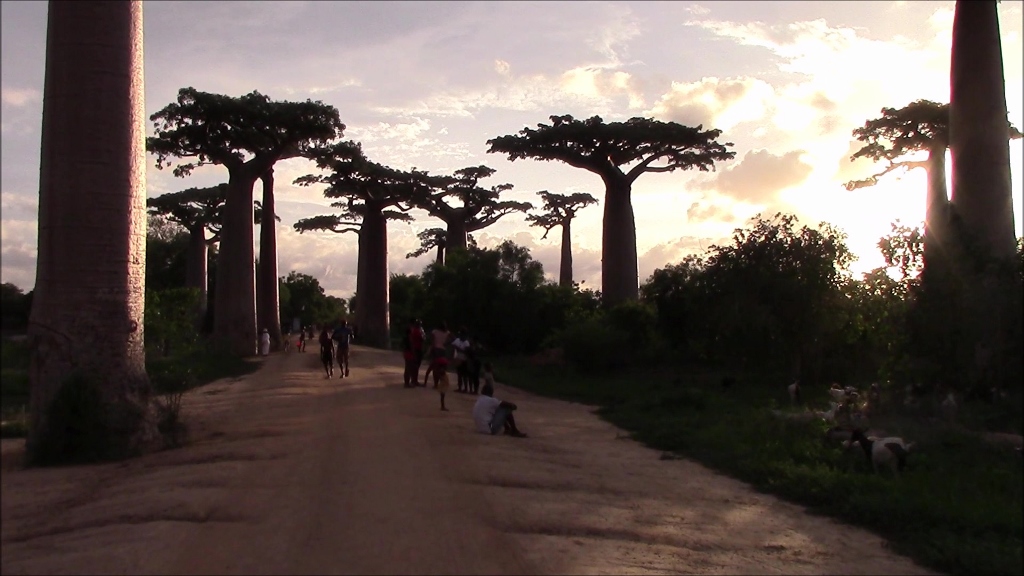 Alley of the Baobabs at sunset
Alley of the Baobabs at sunset
When I looked back again to the other side, the light was already quite different.

We agreed to head back again at this point and from the moving vehicle I took another opportunity to take photos of a couple of baobabs along the way.
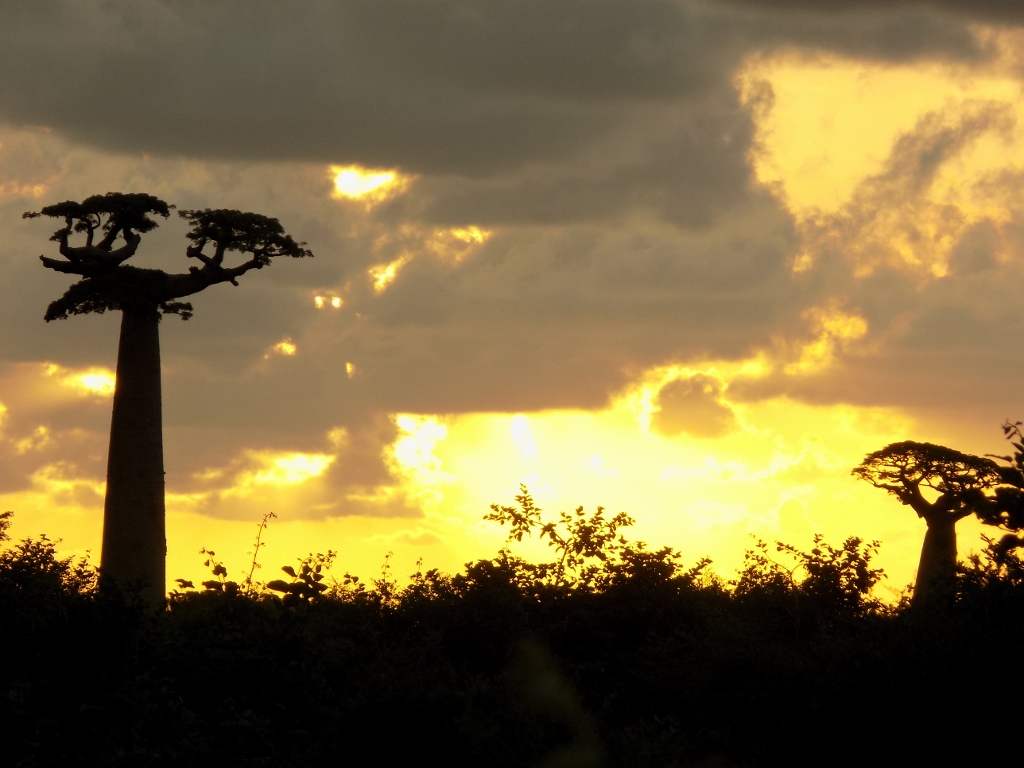 Baobabs at sunset
Baobabs at sunset
We were completely content that evening and filled with fantastic experience and impressions of the day we went to a nearby restaurant where we ordered some shrimps and grilled fish. It was all super tasty and that only added to the already perfect day. We could go to sleep peacefully, which was especially important since we had to get up rather early the following morning.
On that day I returned to my passenger seat and while we were getting ready to start, I managed to get with my photo-camera a couple of women and a girl who were carrying different loads on their heads. Note the girl in particular who regardless of the big pile on the top of her head looks curiously at the surroundings along the way while walking and to do that she is turning her head in quite a relaxed manner. Also note the woman to the right – try to imagine yourself with such a pile of wood on the top of your head.
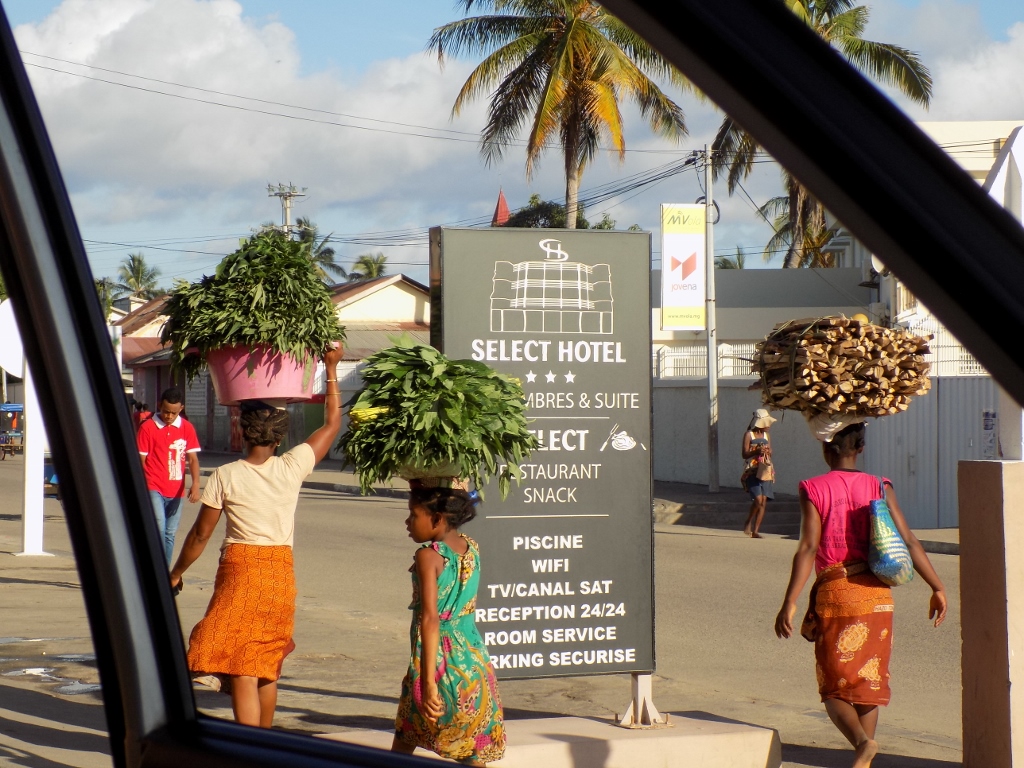 A scene from Morondava
A scene from Morondava
On this day we took the same road that brought us here from Antsirabe, but that did not diminish in the least my interest in the surroundings and the desire to take photos, especially when I found something very interesting – such as these goats that closed their ranks under the shadow of a tree, since around noon it was just far too hot for everybody.
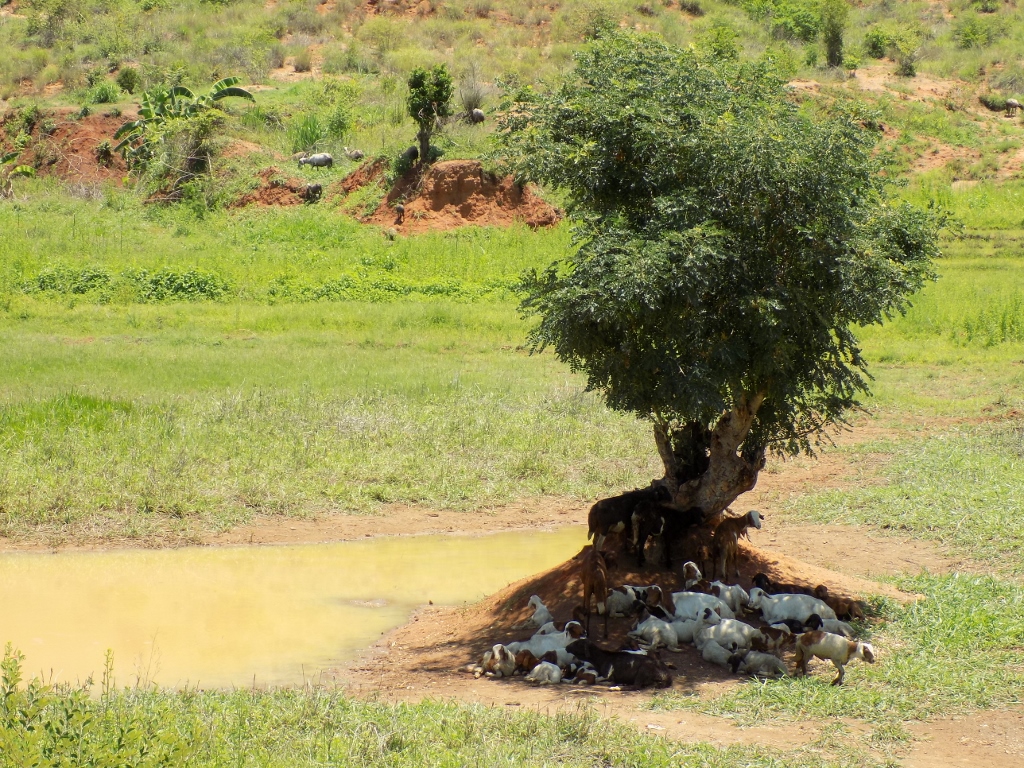 Noon on Madagascar
Noon on Madagascar
Of course, the lunch break was taken in the same place, town Miandrivazo, but here I took for the first time a dish that is considered to be Malagasy, although its versions are certainly quite frequent in Asia. The dish is called Mine Sao and these are thin noodles with vegetables and/or meat. I opted for a version with chicken.
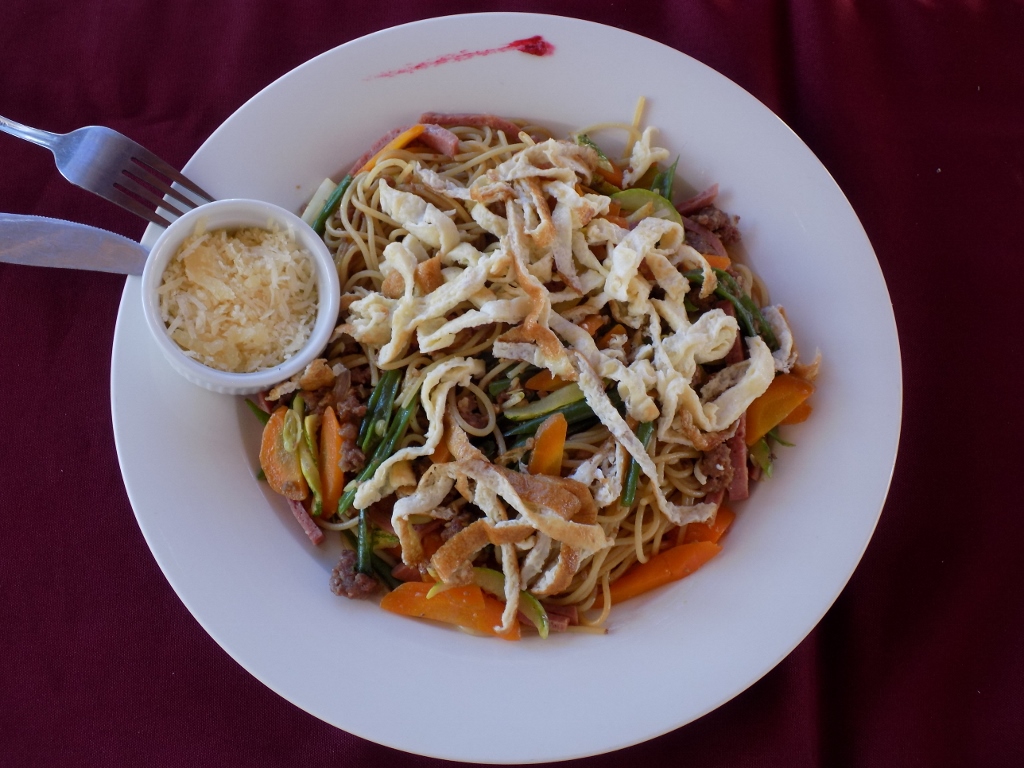 Mine Sao au Poulet
Mine Sao au Poulet
After the lunch break we continued with our drive and again I frequently felt breathless before the beauty of the landscapes of Madagascar.

Along the way we drove through bigger or smaller villages and in the road sections between the settlements, we often passed by people who were going about some business there.
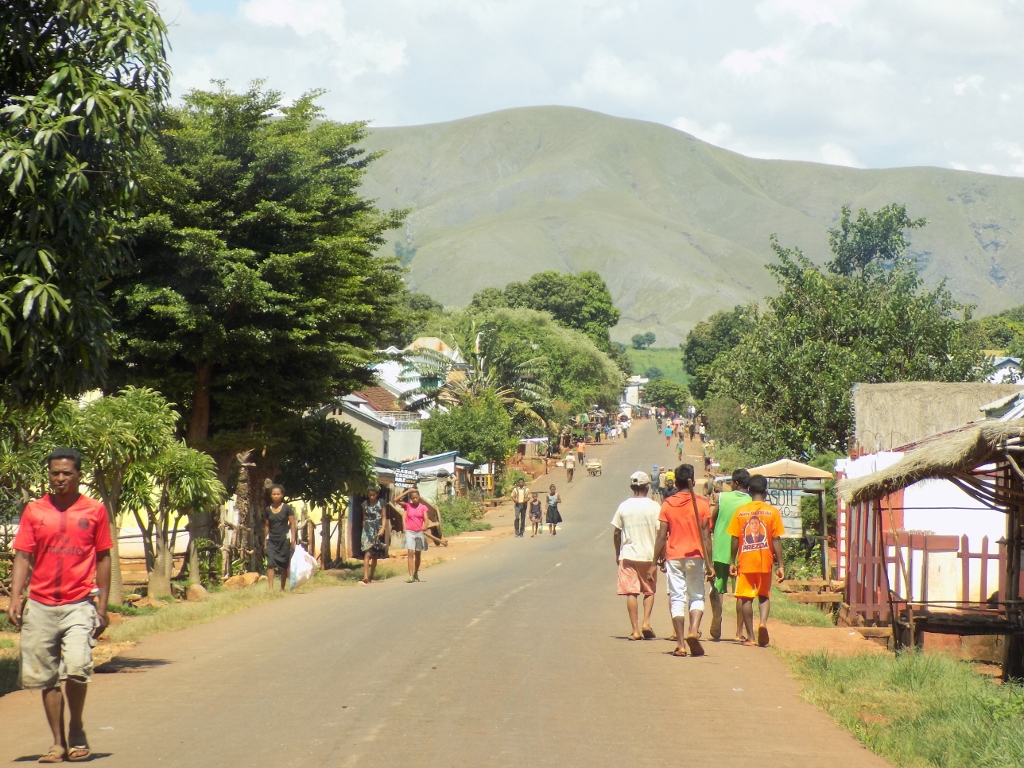 A village on the Miandrivazo – Antsirabe road
A village on the Miandrivazo – Antsirabe road
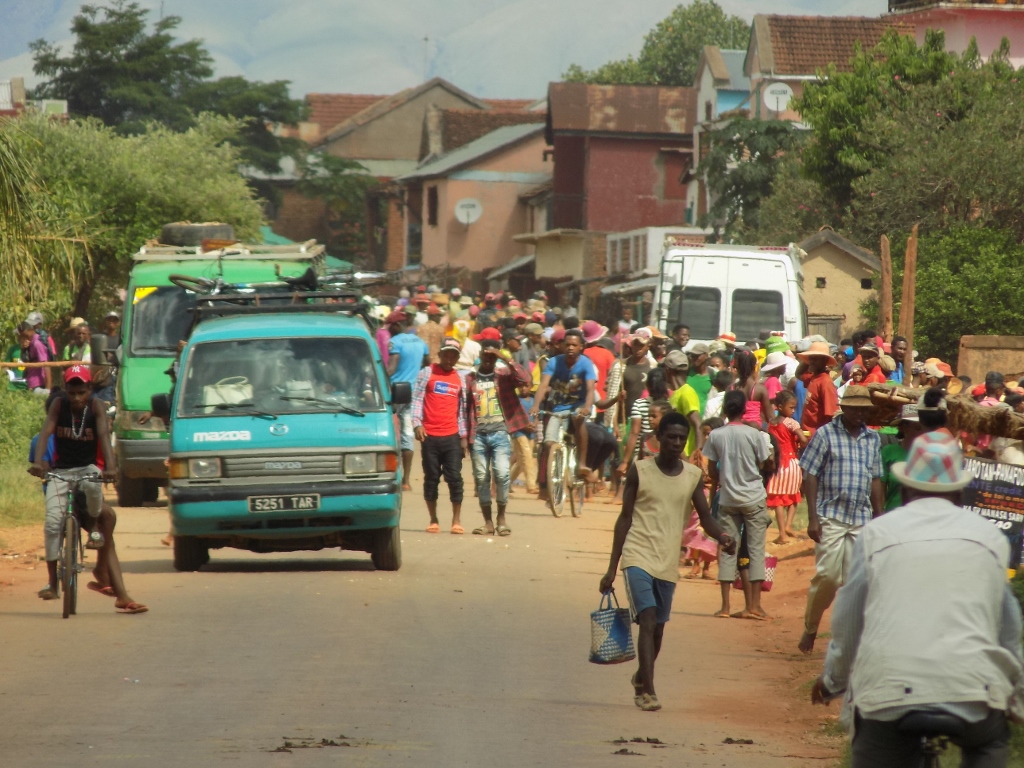 Market day in another settlement on the Miandrivazo – Antsirabe road
Market day in another settlement on the Miandrivazo – Antsirabe road
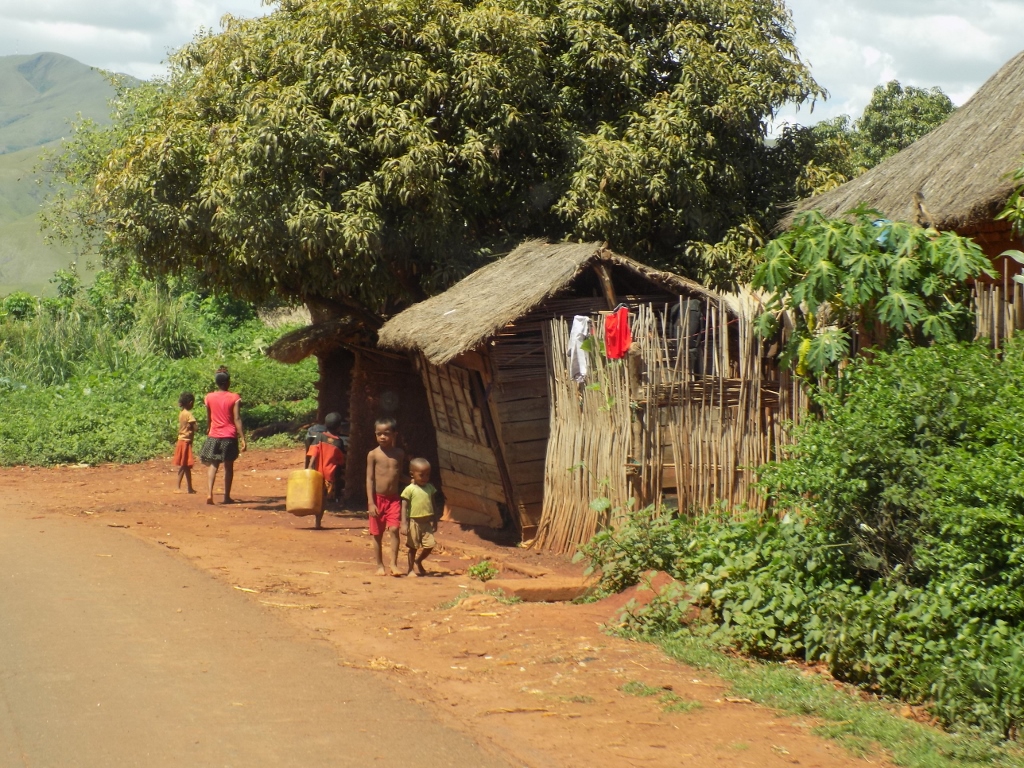 People live here...
People live here...
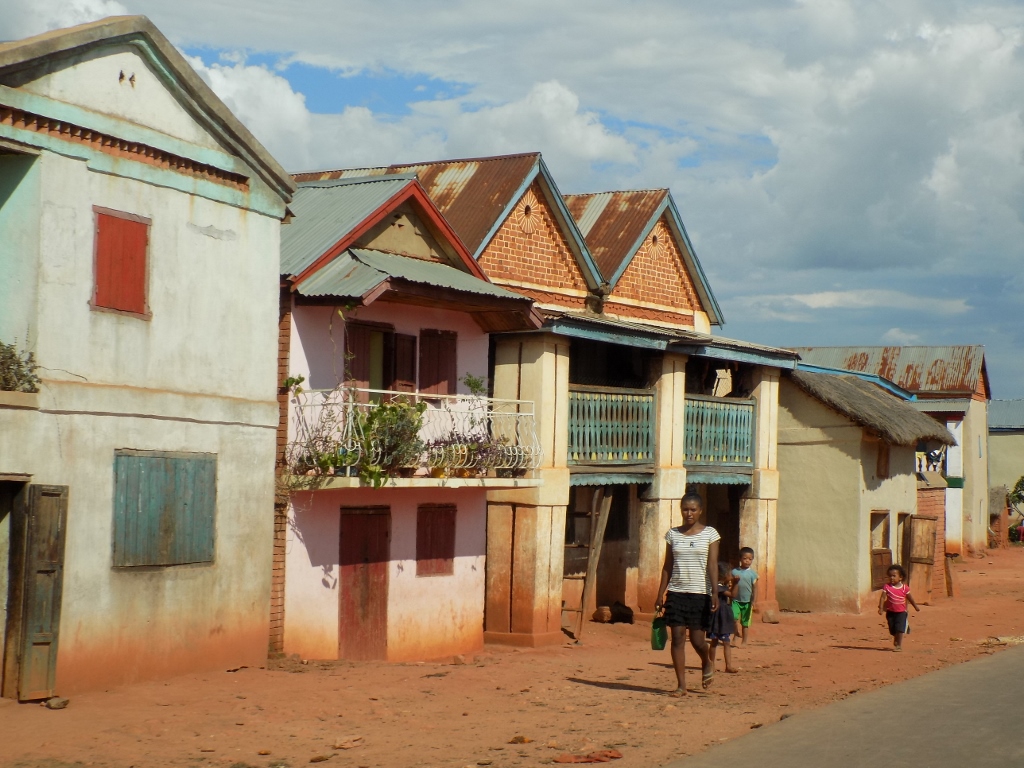 ...as well as here
...as well as here
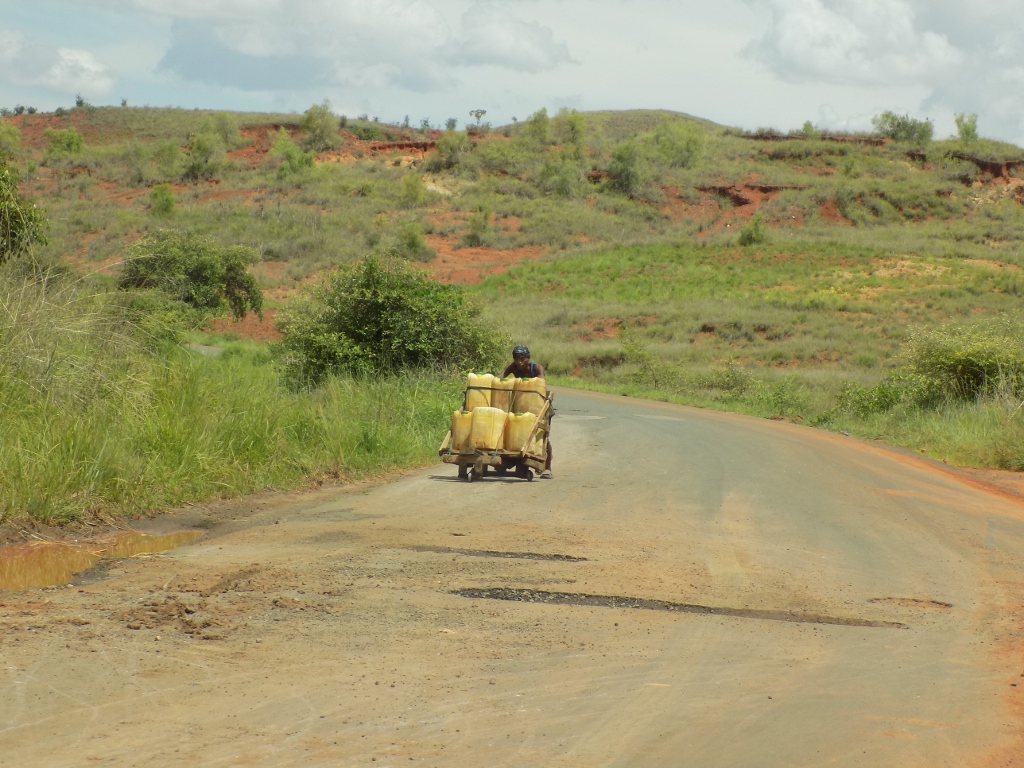 Scene from the Miandrivazo – Antsirabe road
Scene from the Miandrivazo – Antsirabe road
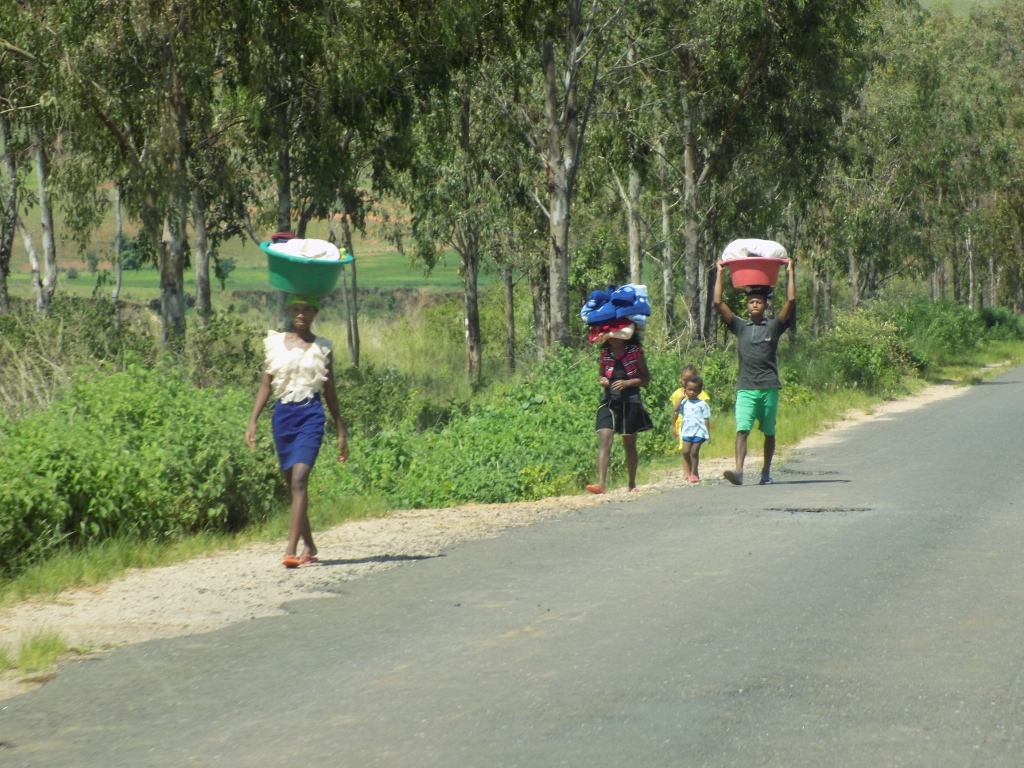 Scene from the Miandrivazo – Antsirabe road
Scene from the Miandrivazo – Antsirabe road
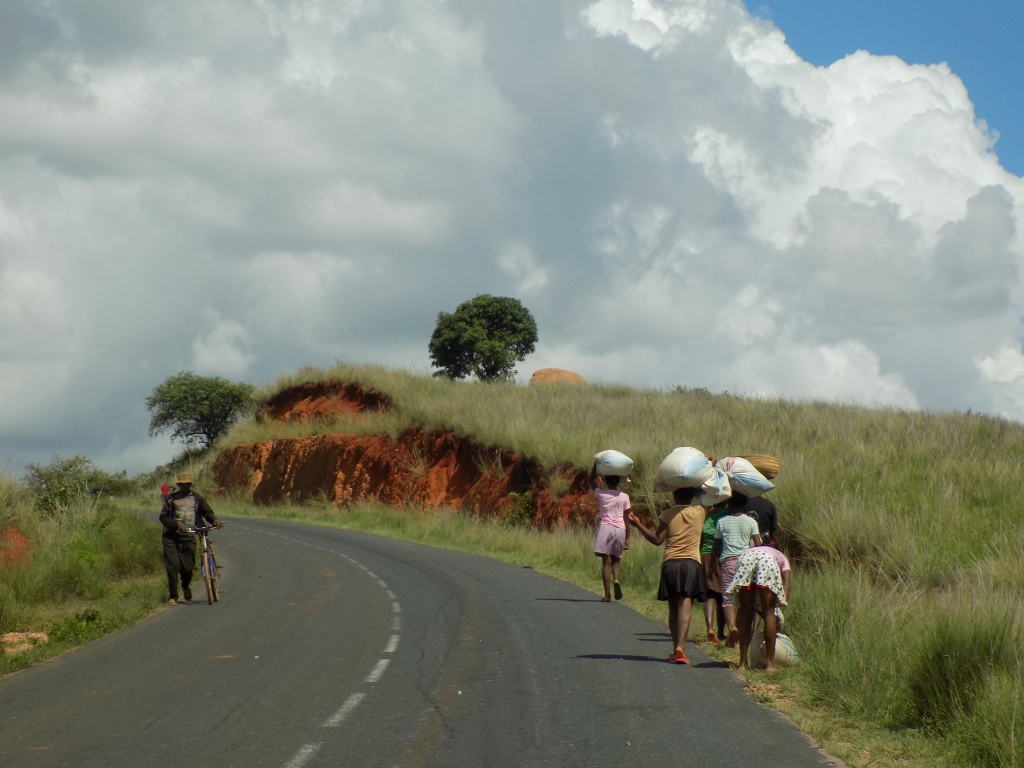 Scene from the Miandrivazo – Antsirabe road
Scene from the Miandrivazo – Antsirabe road
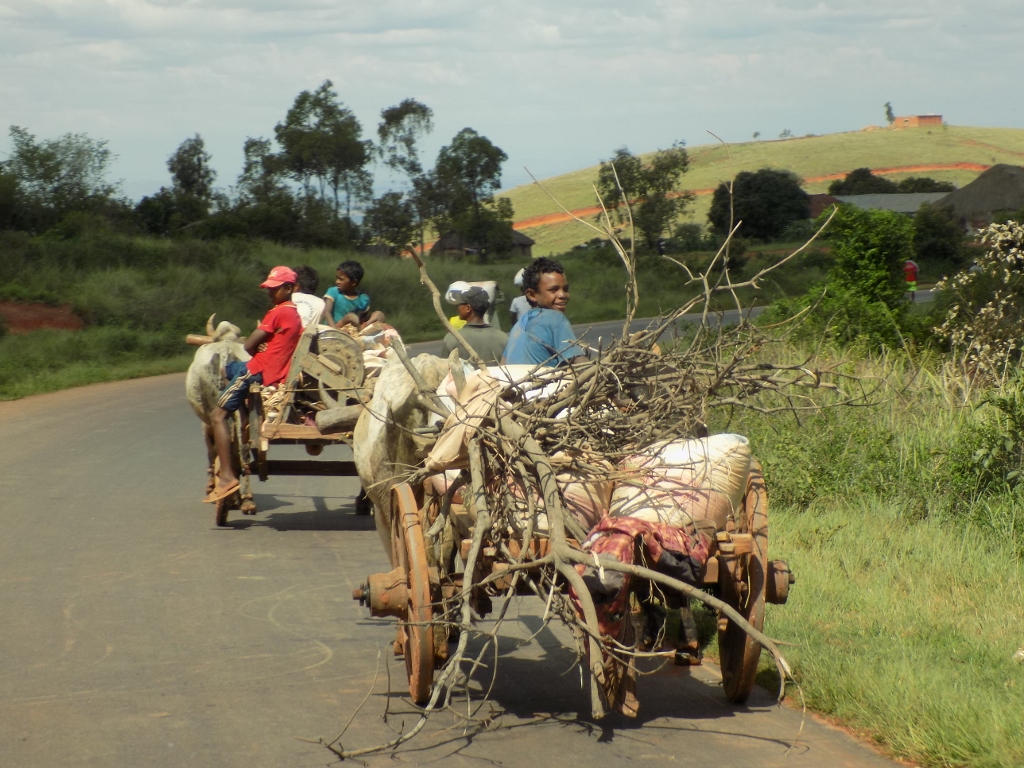 Scene from the Miandrivazo – Antsirabe road
Scene from the Miandrivazo – Antsirabe road
As we approached Antsirabe, we could see some dark clouds in front of us and soon a very strong downpour started.
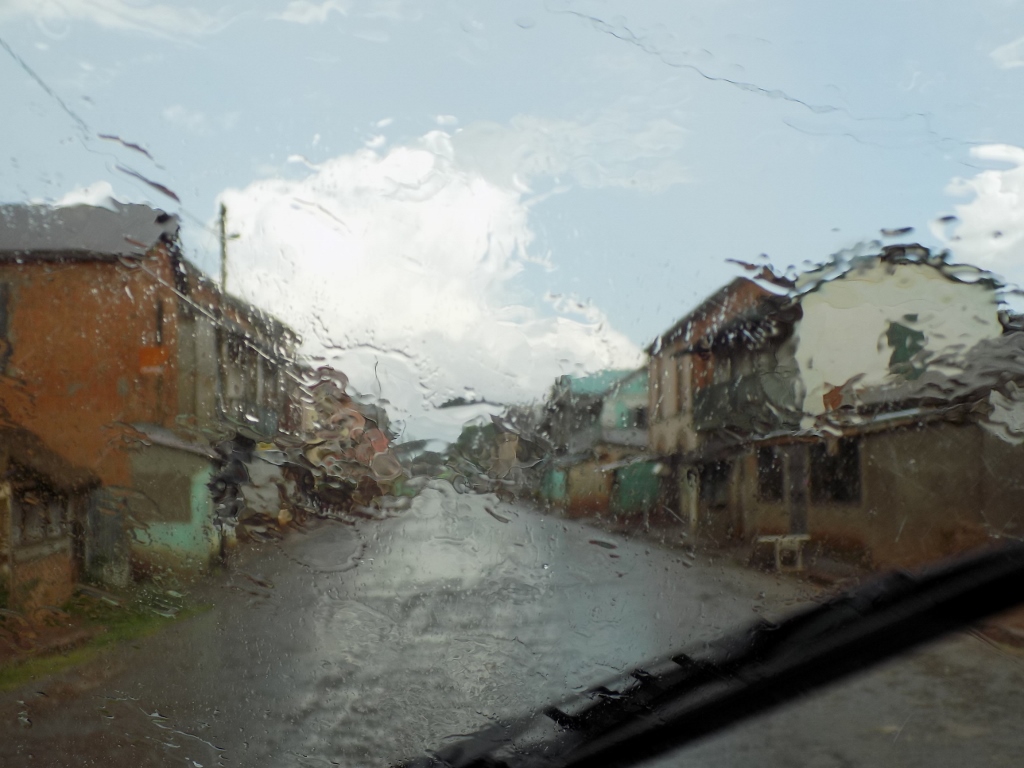 Heavy shower on Madagascar seen from the comfort and dryness of a vehicle
Heavy shower on Madagascar seen from the comfort and dryness of a vehicle
Still, the rain did not last for too long and then we could enjoy again the beautiful light of the Sun and the incredible colour schemes so abundant on Madagascar.
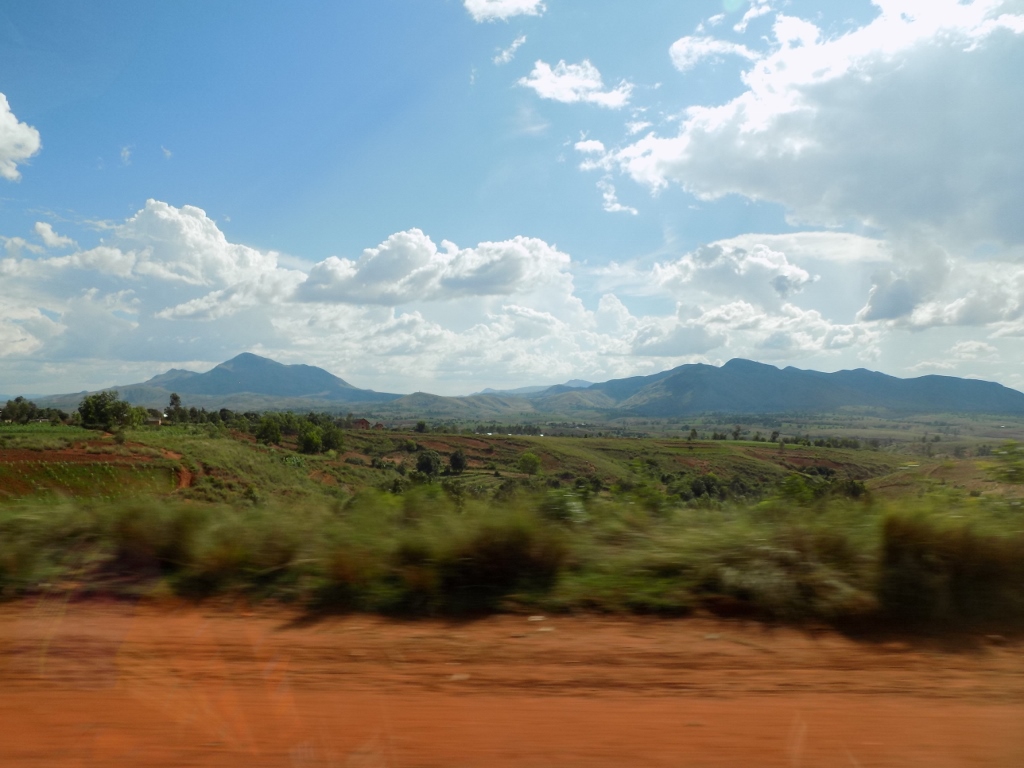 Landscapes washed by rain
Landscapes washed by rain
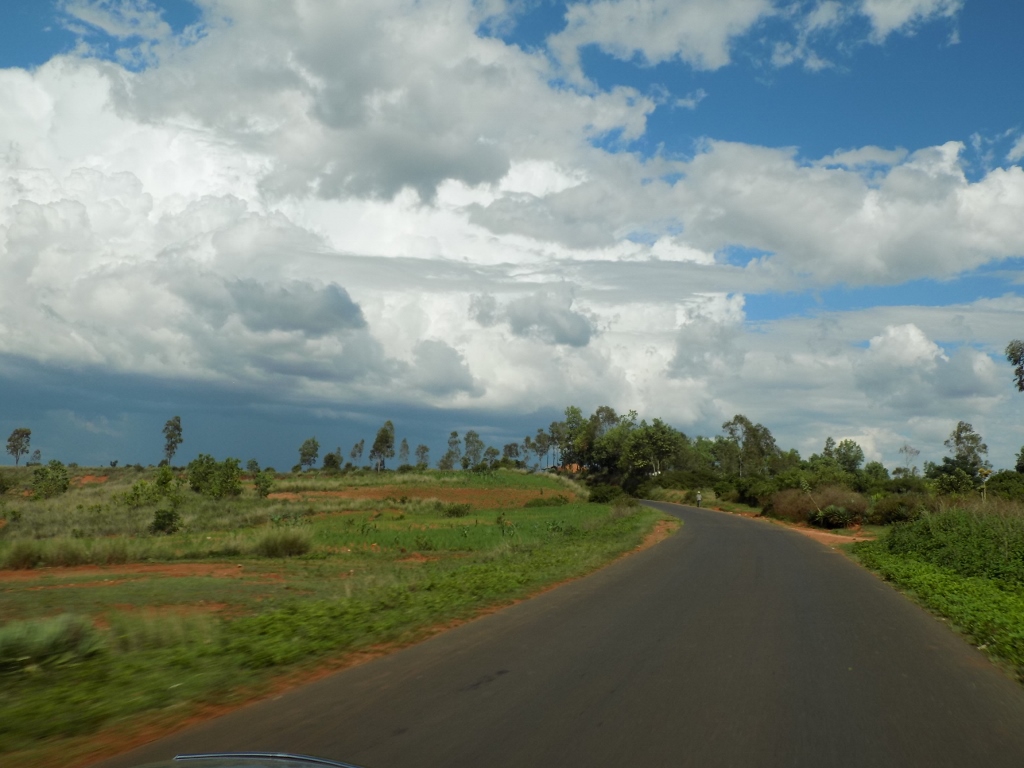 Landscapes washed by rain
Landscapes washed by rain
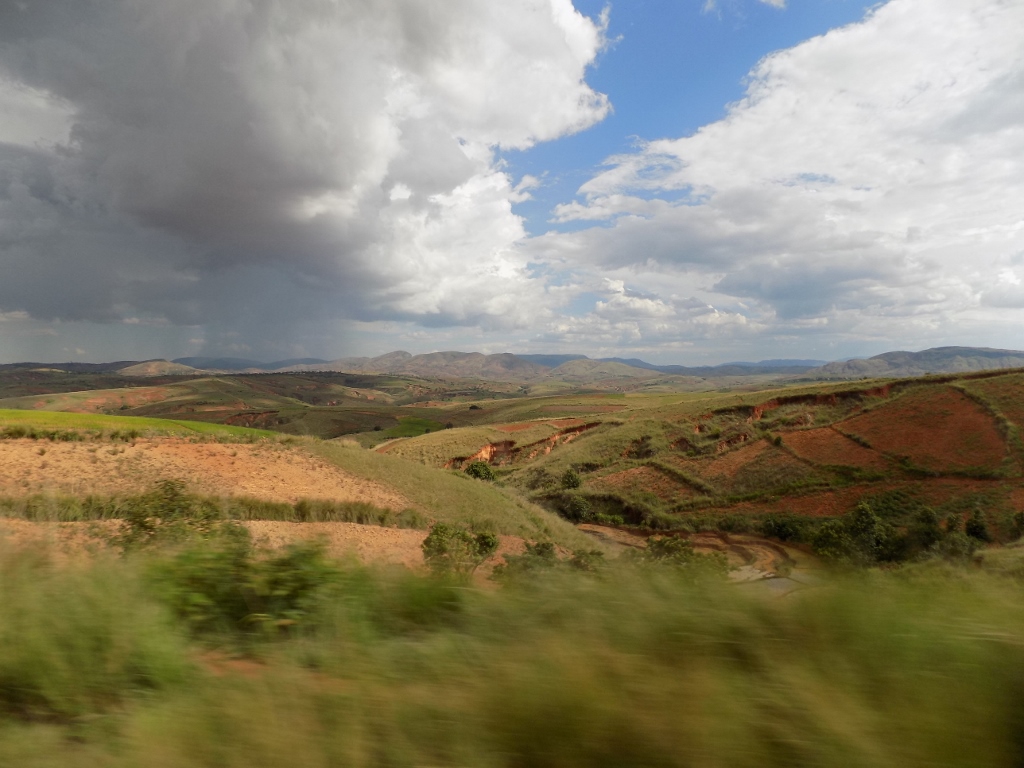 Landscapes washed by rain
Landscapes washed by rain
Along the way, Rija told us that the houses on Madagascar are built in such a way that the doors and the windows face west, but although this was quite pronounced in some cases, it was certainly not a rule that had no exceptions.
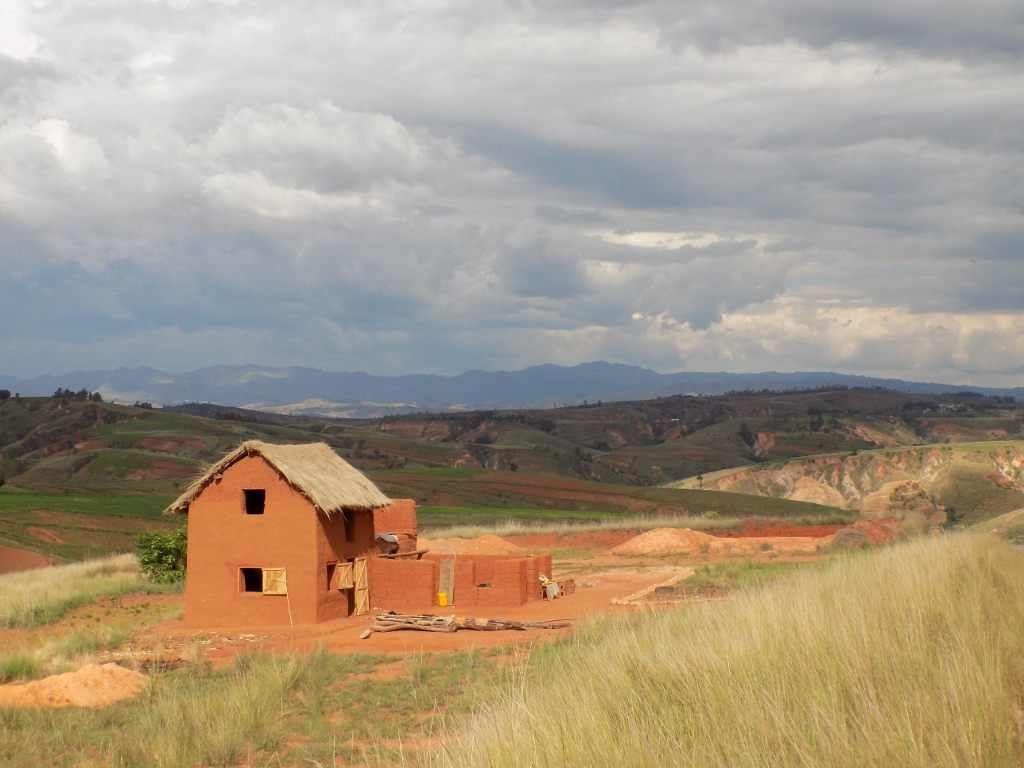 Landscapes washed by rain
Landscapes washed by rain

The closer we got to Antsirabe, the more rice fields could be seen, but along the way I also frequently noticed landslides created after the deforestation, while there is still tendency to have large quantities of rain.
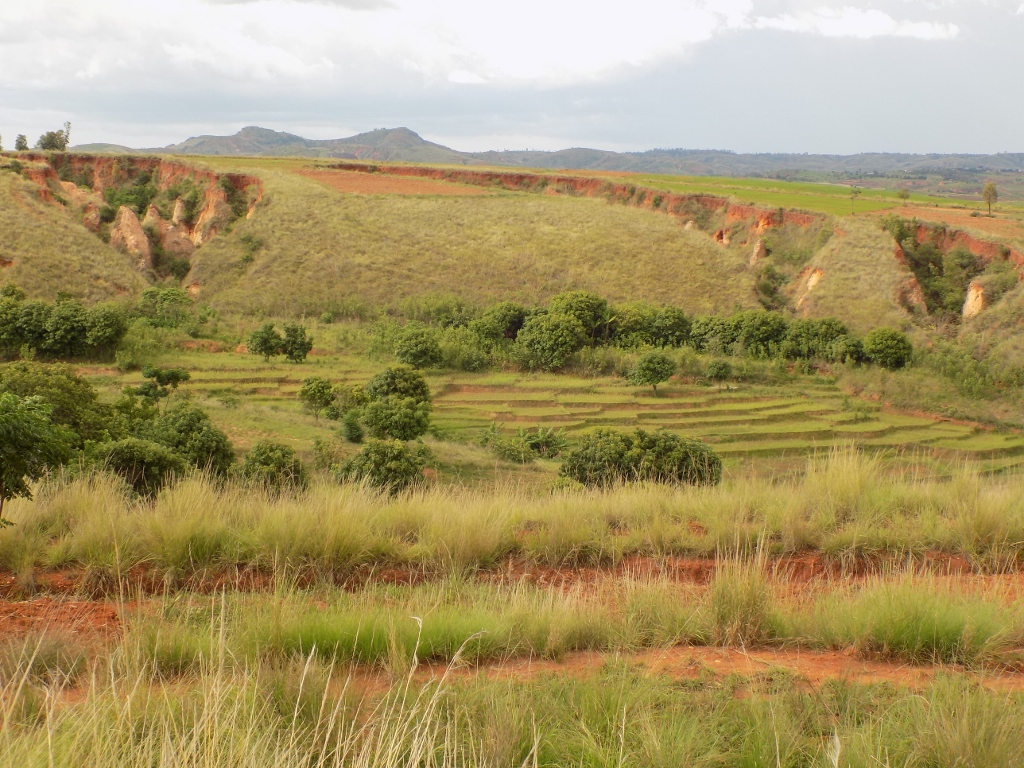 Rice fields and landslides
Rice fields and landslides
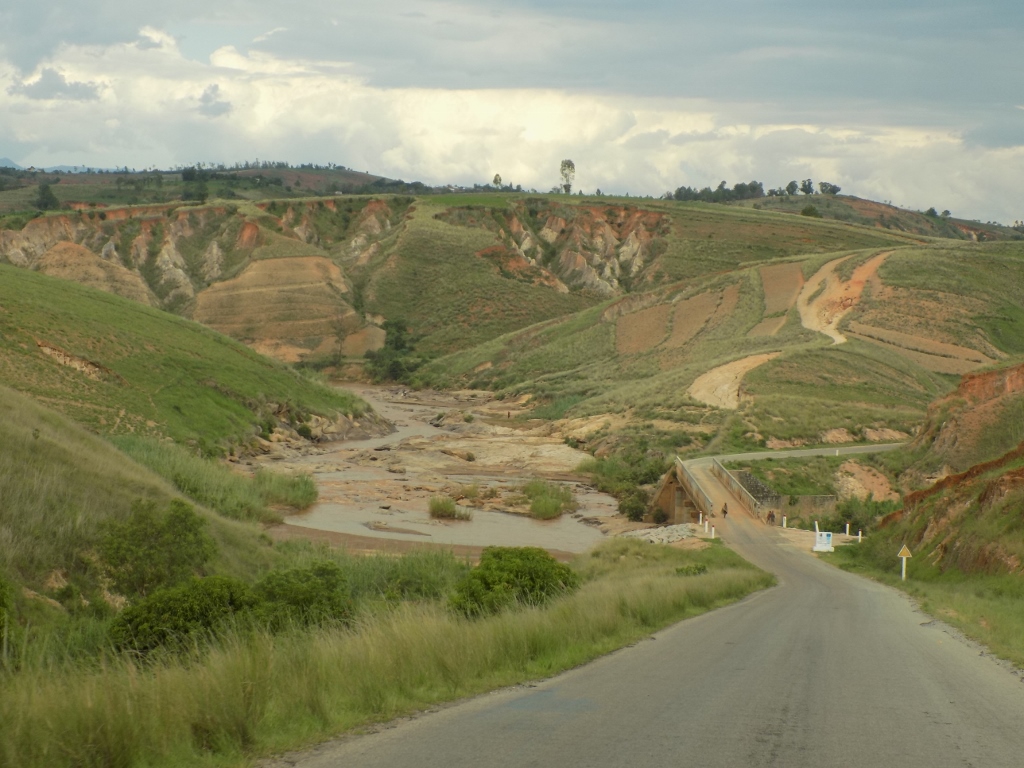 Landscapes also include rivers
Landscapes also include rivers
Although it seemed occasionally that rain was just about to start pouring again, we still reached Antsirabe in dry weather. We were met by the urban hassle, as well as numerous pulled rickshaws or the pousse-pousse which Antsirabe is famous for.
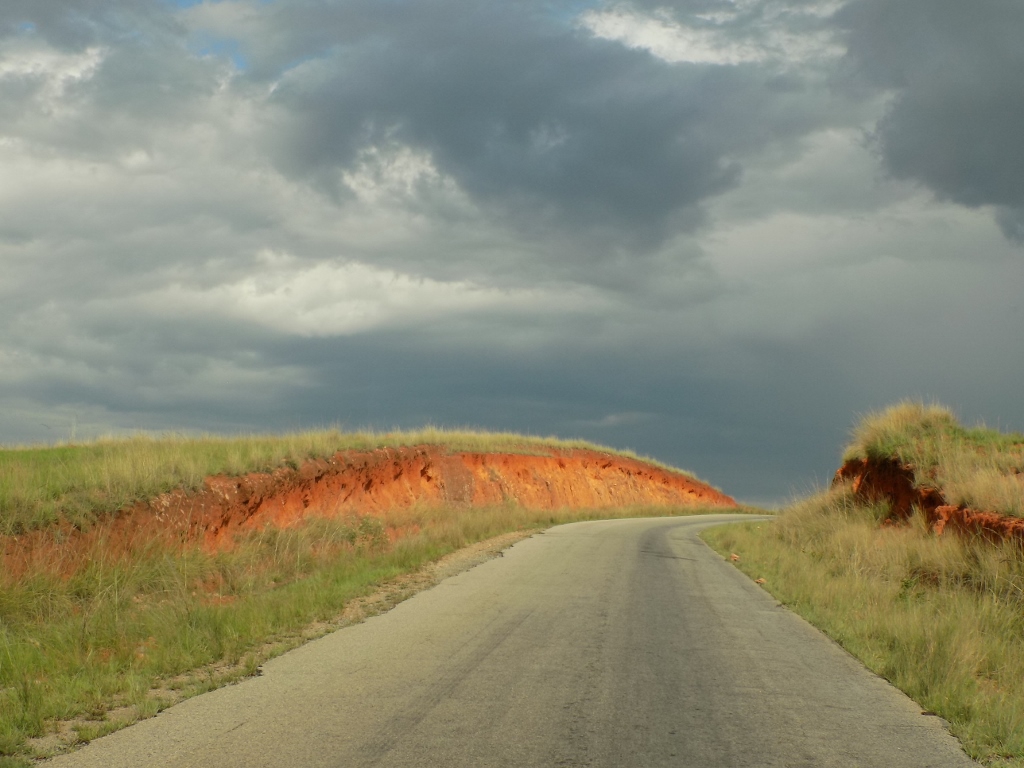 Will it rain or will it not?
Will it rain or will it not?
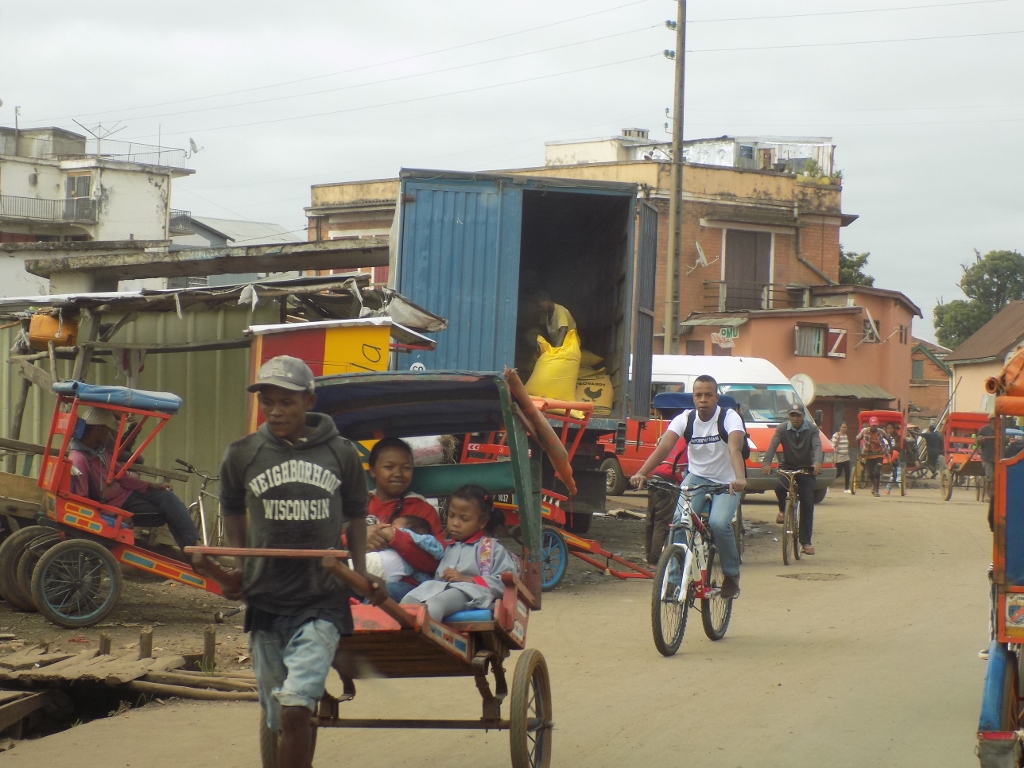 We are back in Antsirabe
We are back in Antsirabe
We left Morondava in the west of the country and on the shores of the Mozambique Channel already at 7 o’clock in the morning and yet we arrived in Antsirabe only around 5 pm. Although we practically spent the whole day just sitting, we felt rather tired with all of that driving and while we had our dinner a little later we commented on how much more tired and exhausted we would have been if we had taken public transportation which generally takes at least 16 hours for the same distance.
Be as it may, after a simple dinner in a nearby restaurant we returned to our hotel or rather bed and breakfast. This was a B&B within a cross-cultural competence centre managed by the Norwegian Mission Society which has been present here for over 100 years. It is obvious that in the meantime they have decided to expand their offer and it is always good to make some more money if for nothing else then to cover the running costs. It all suited us quite fine, especially because the entire complex was incredibly quiet.
We went to bed early and could thus get a good rest and catch up on our sleep.